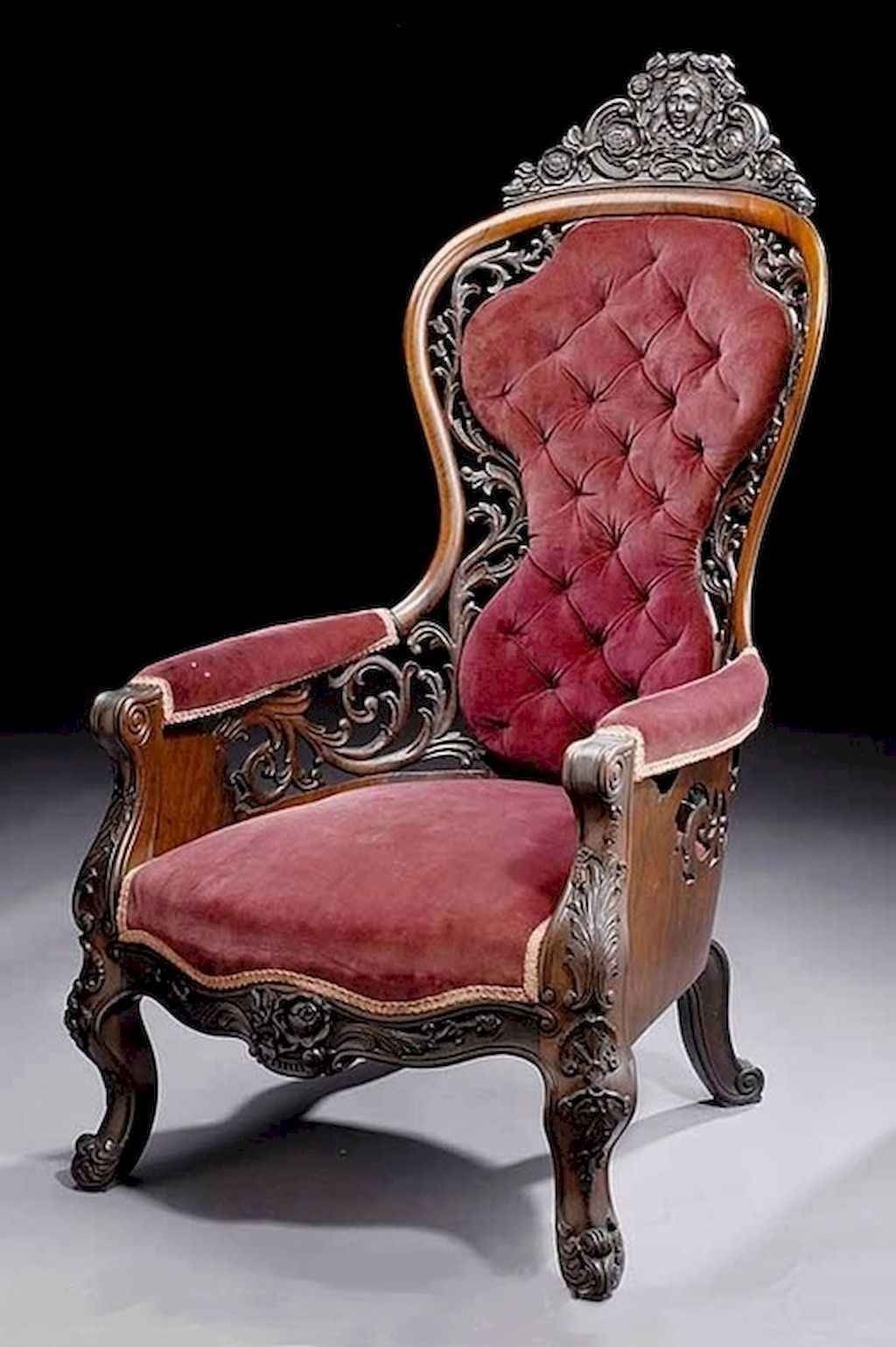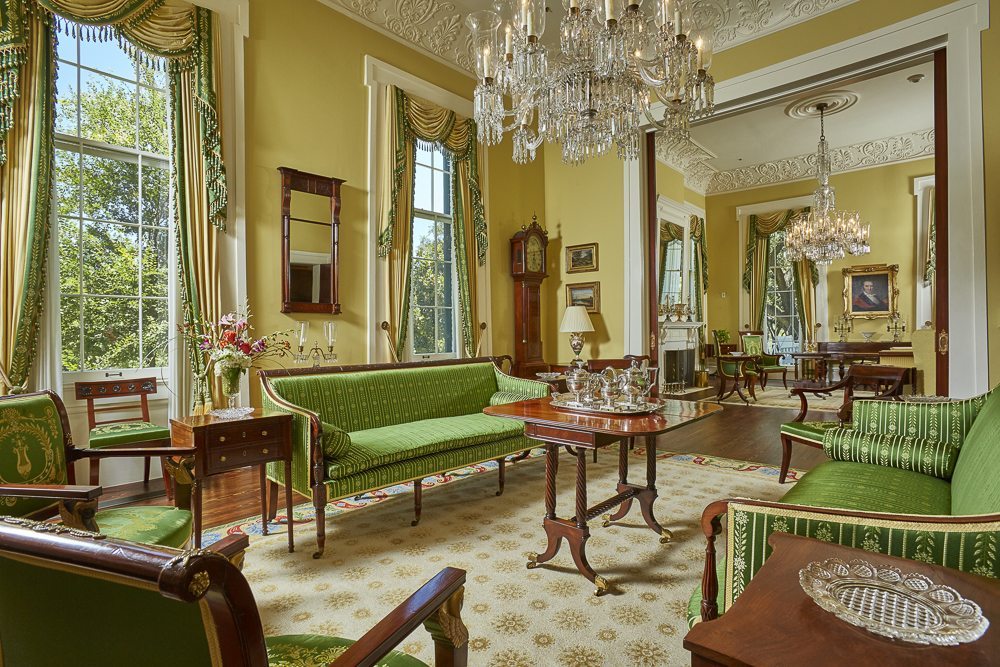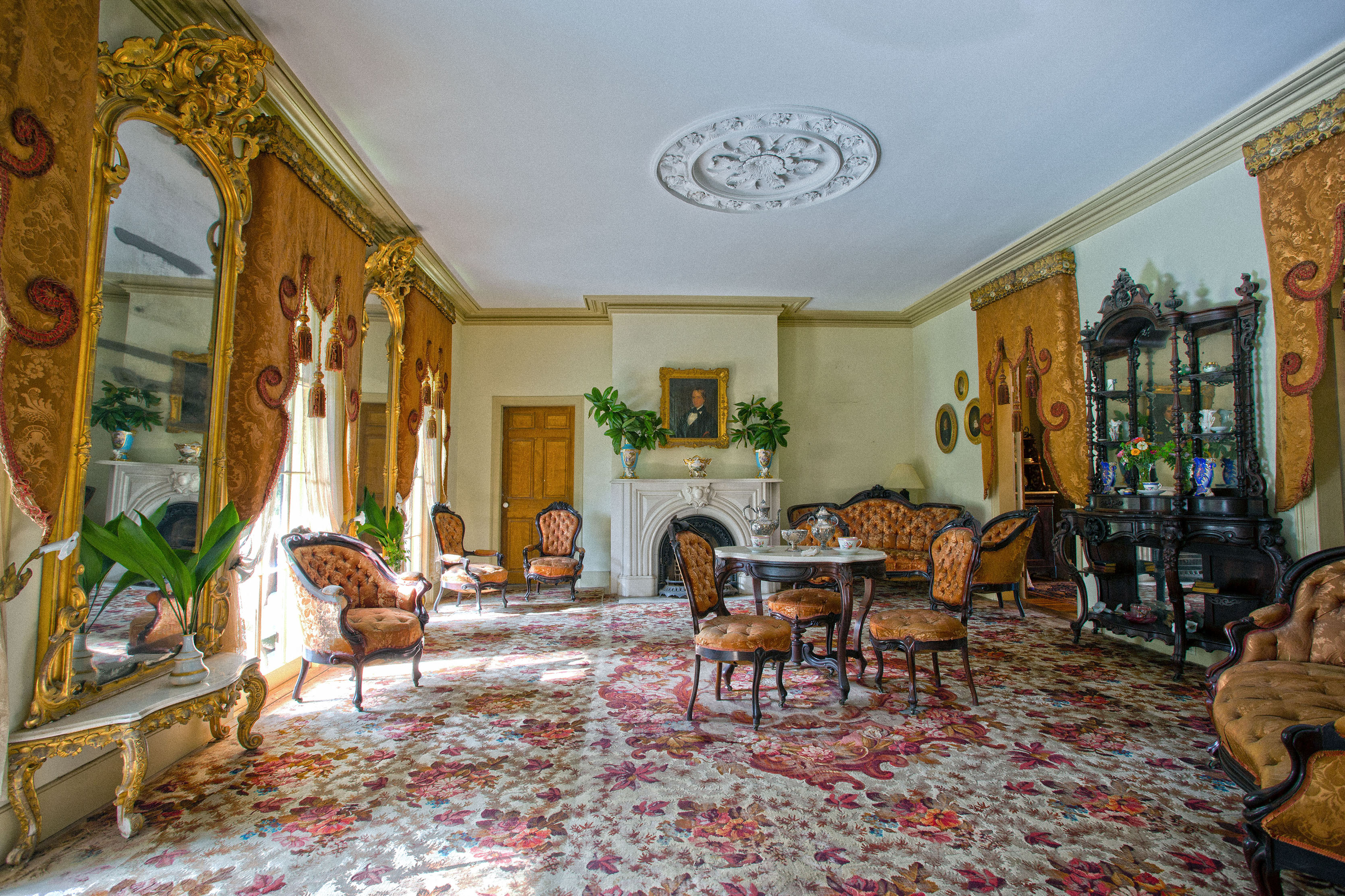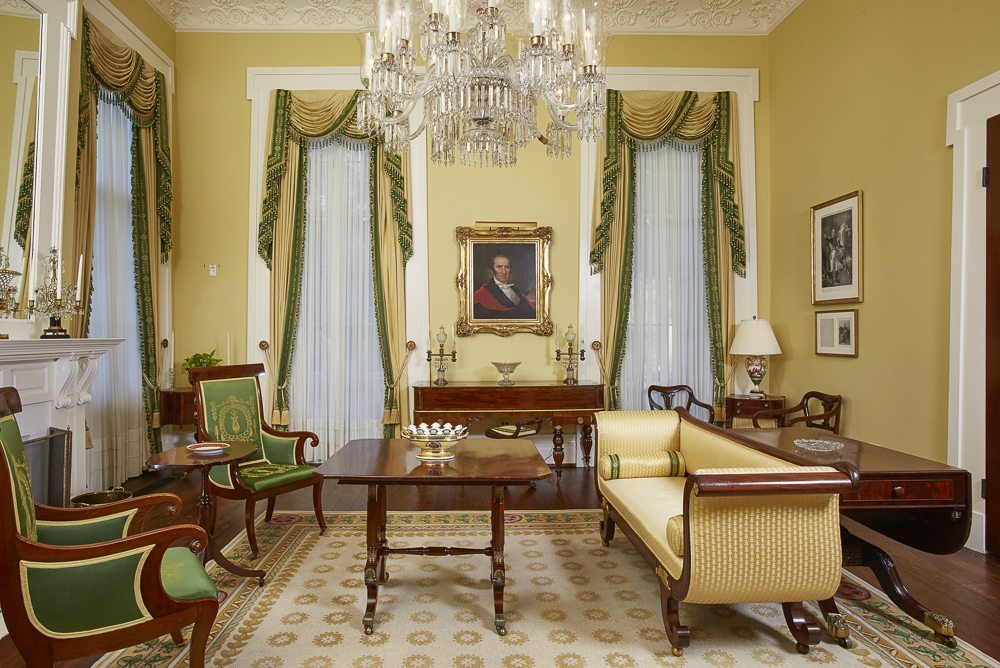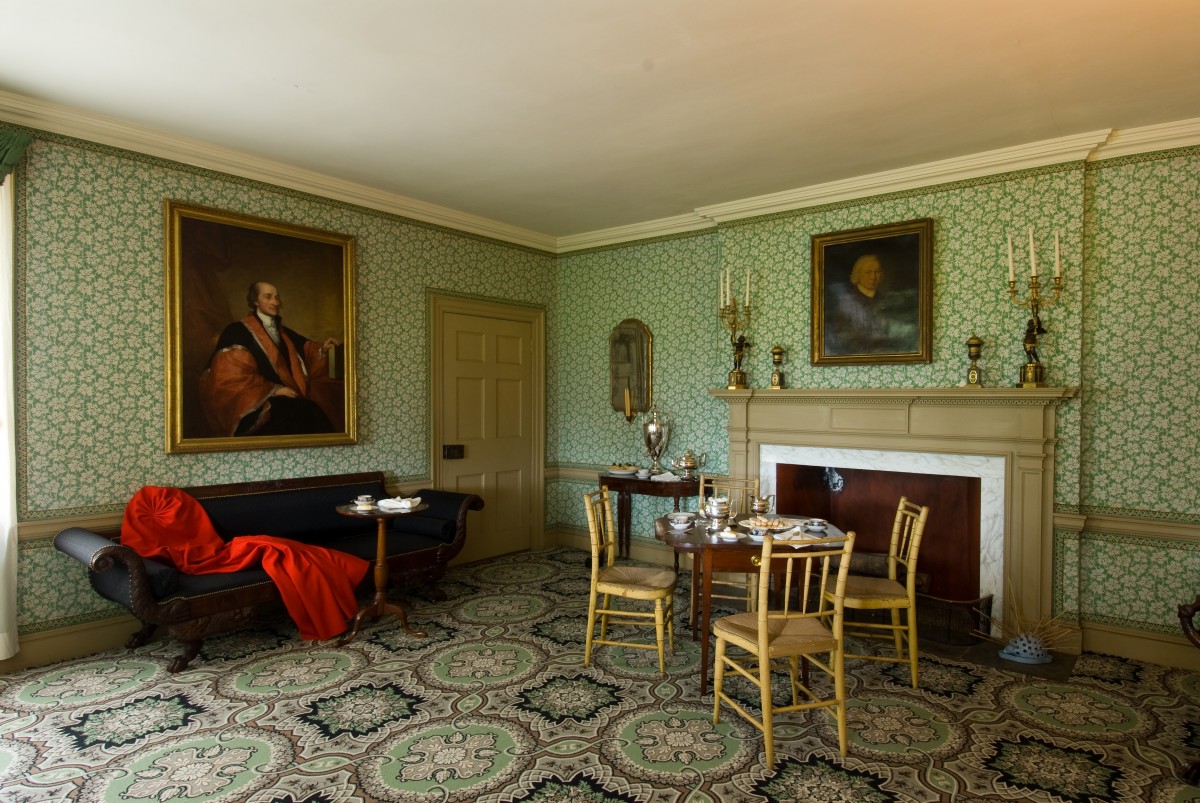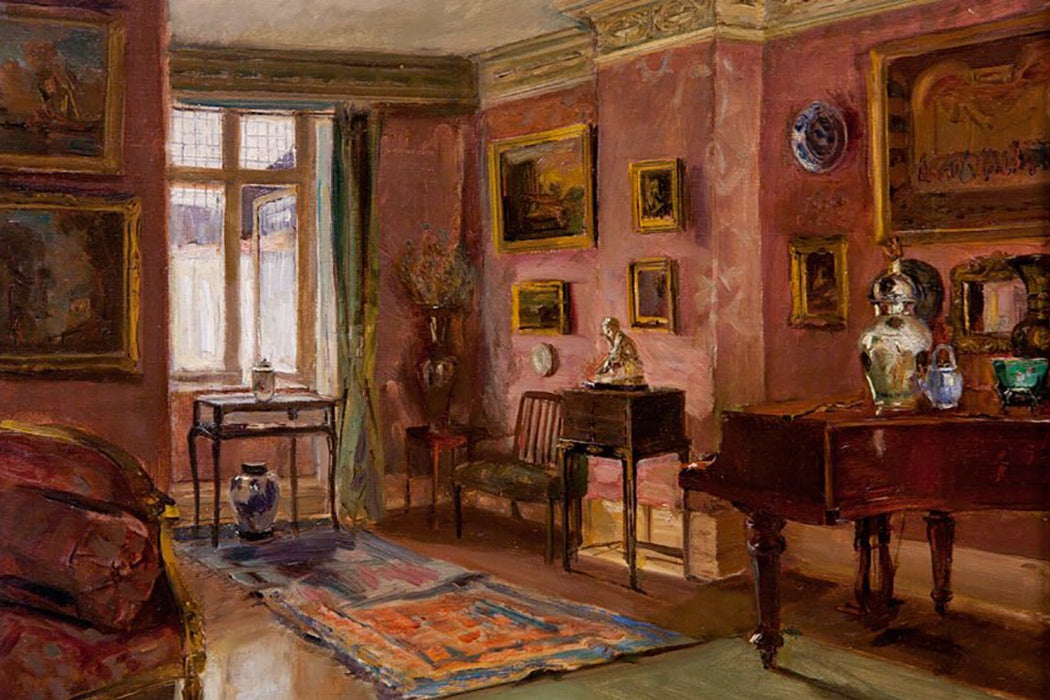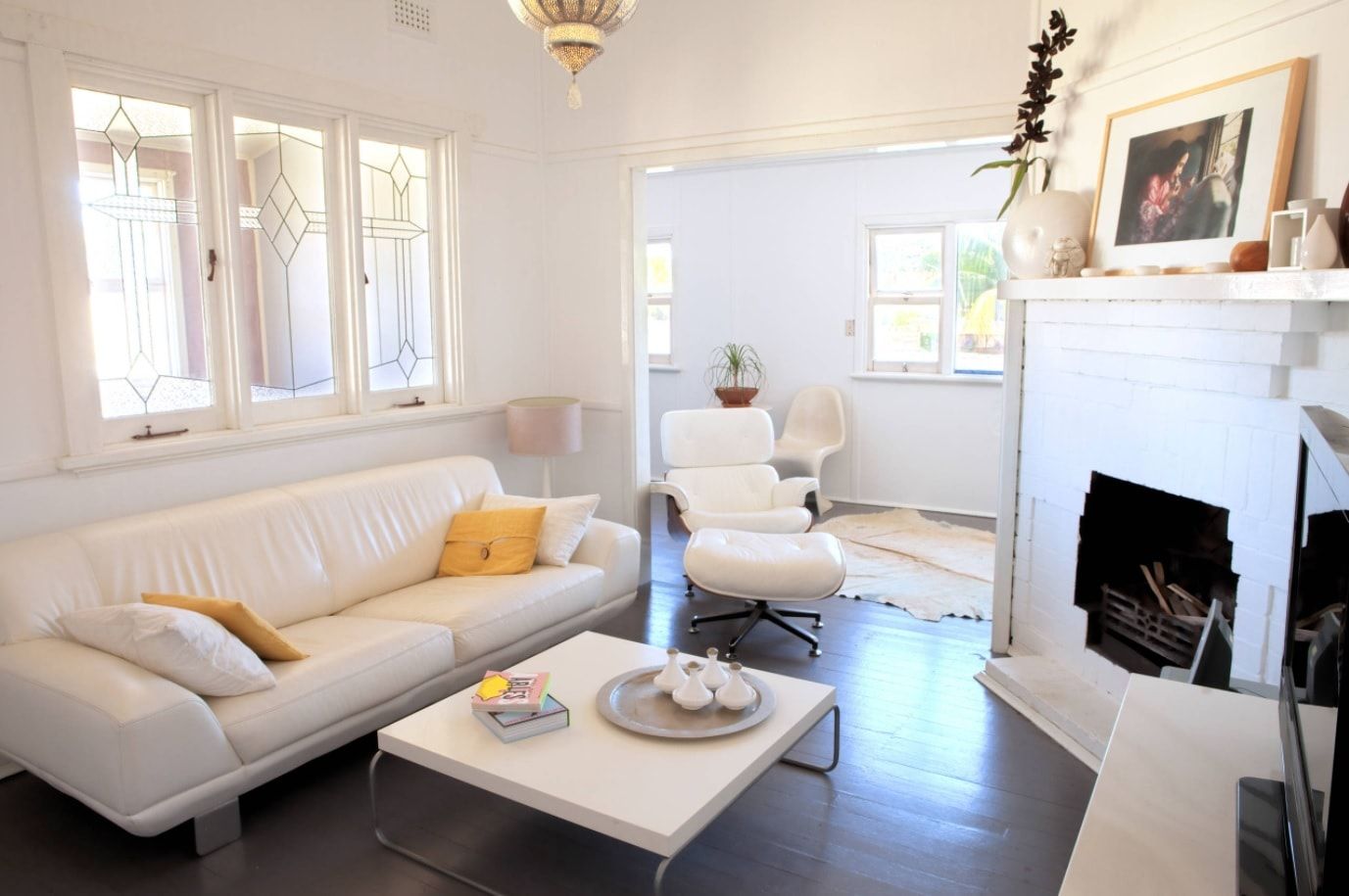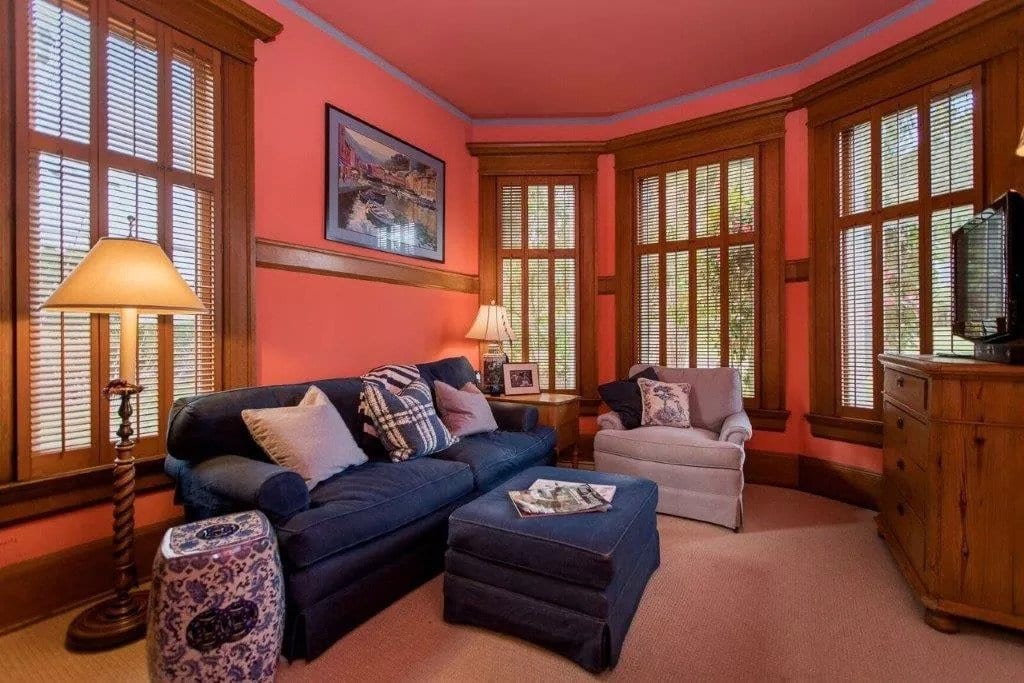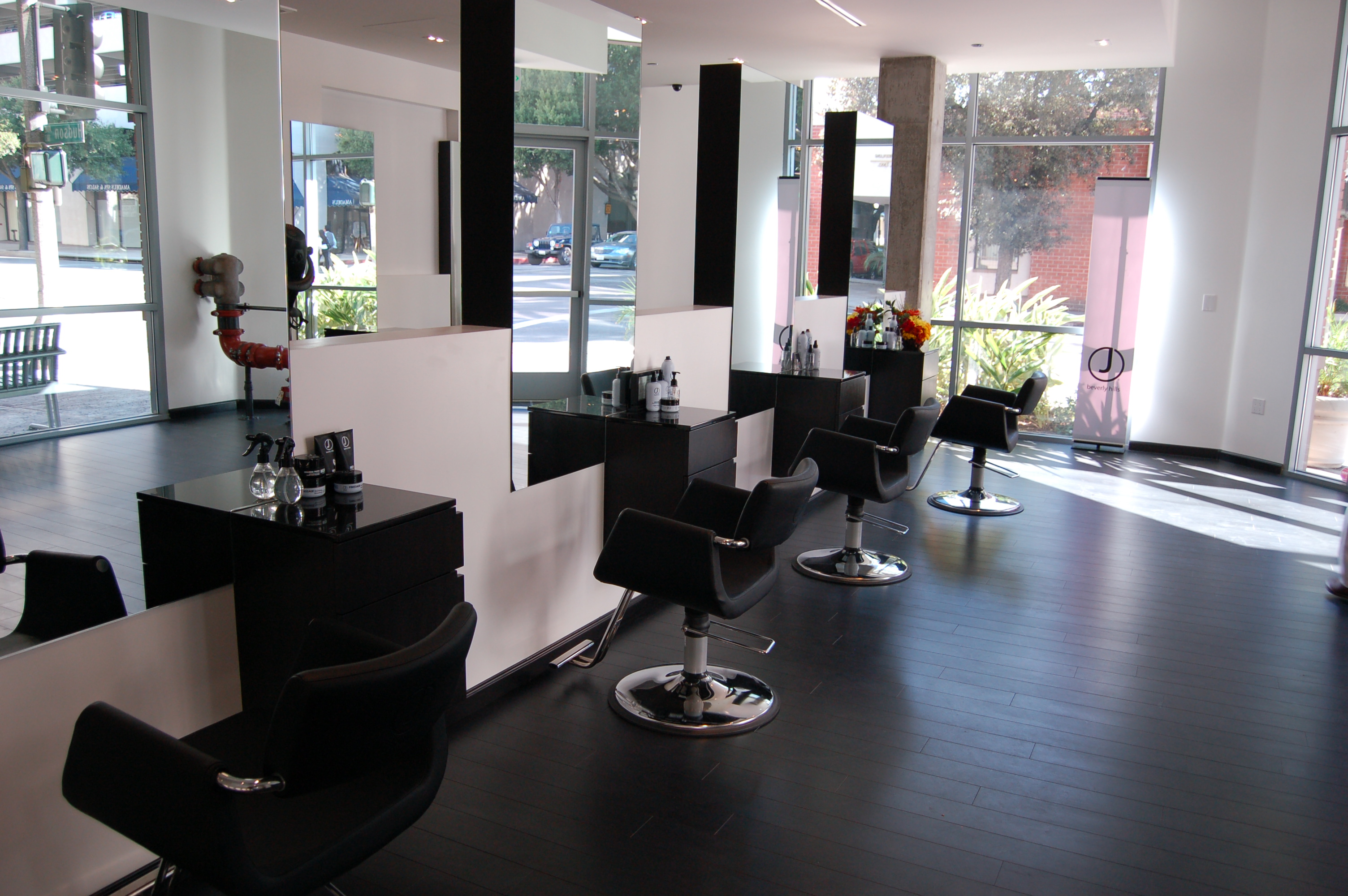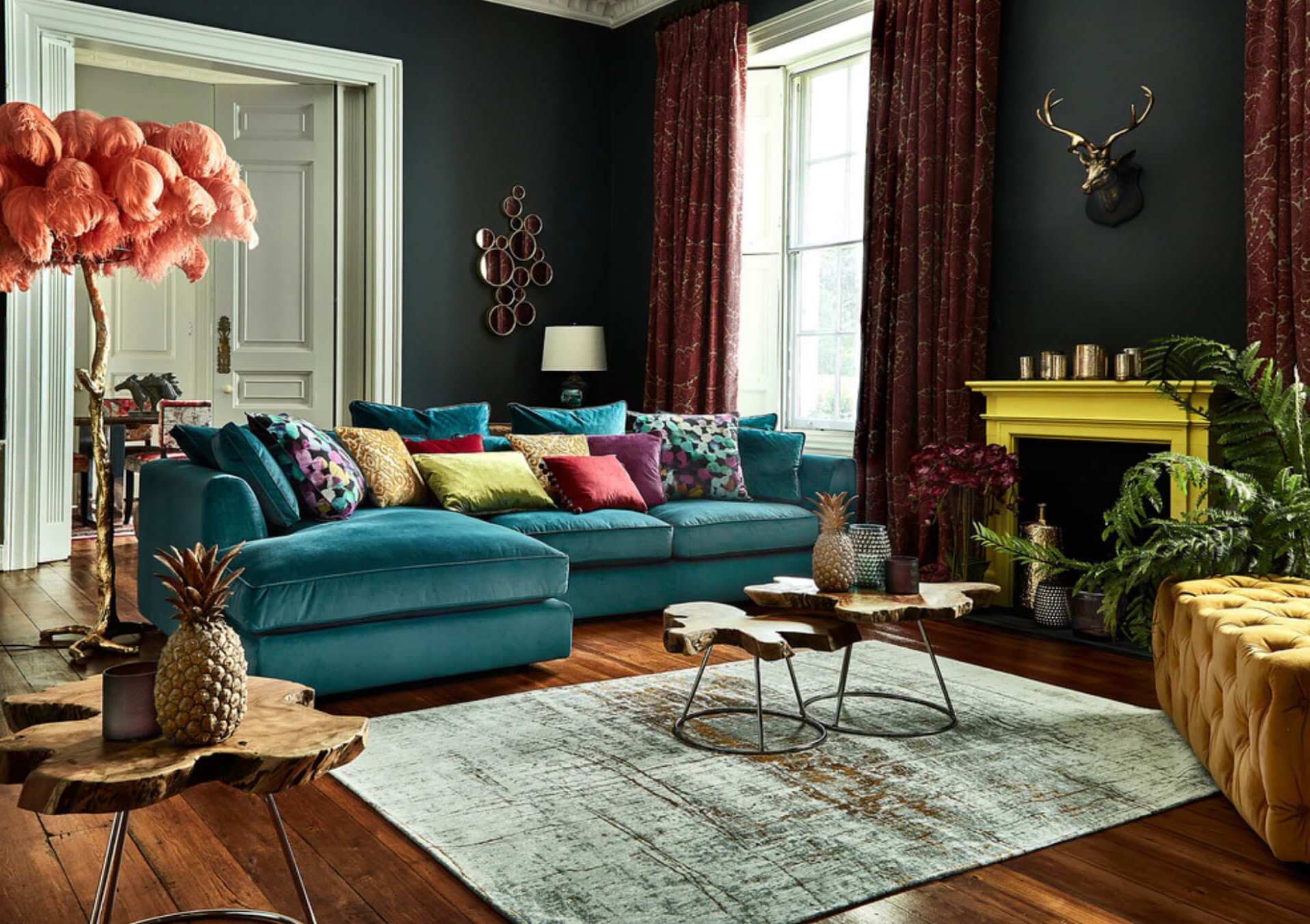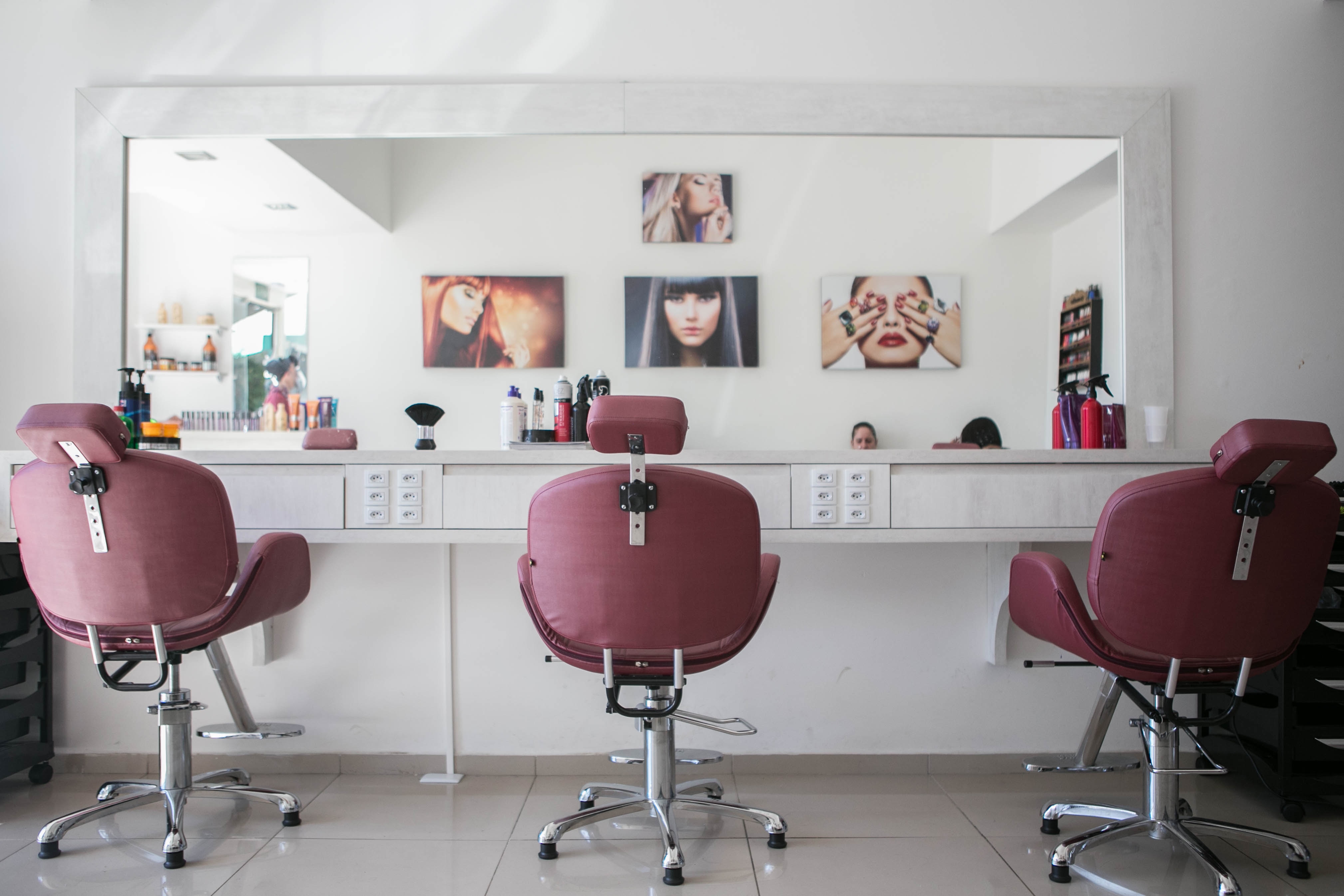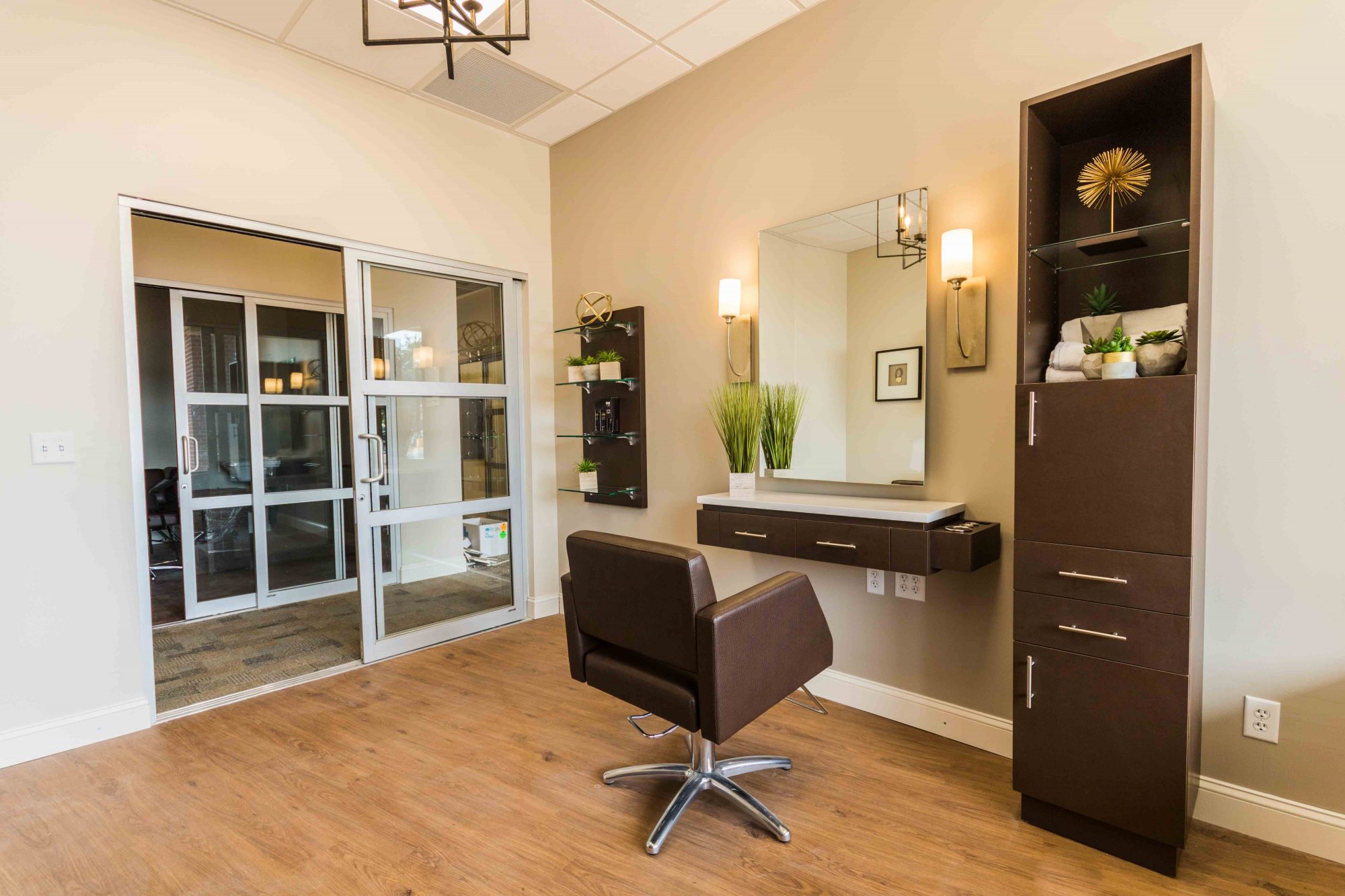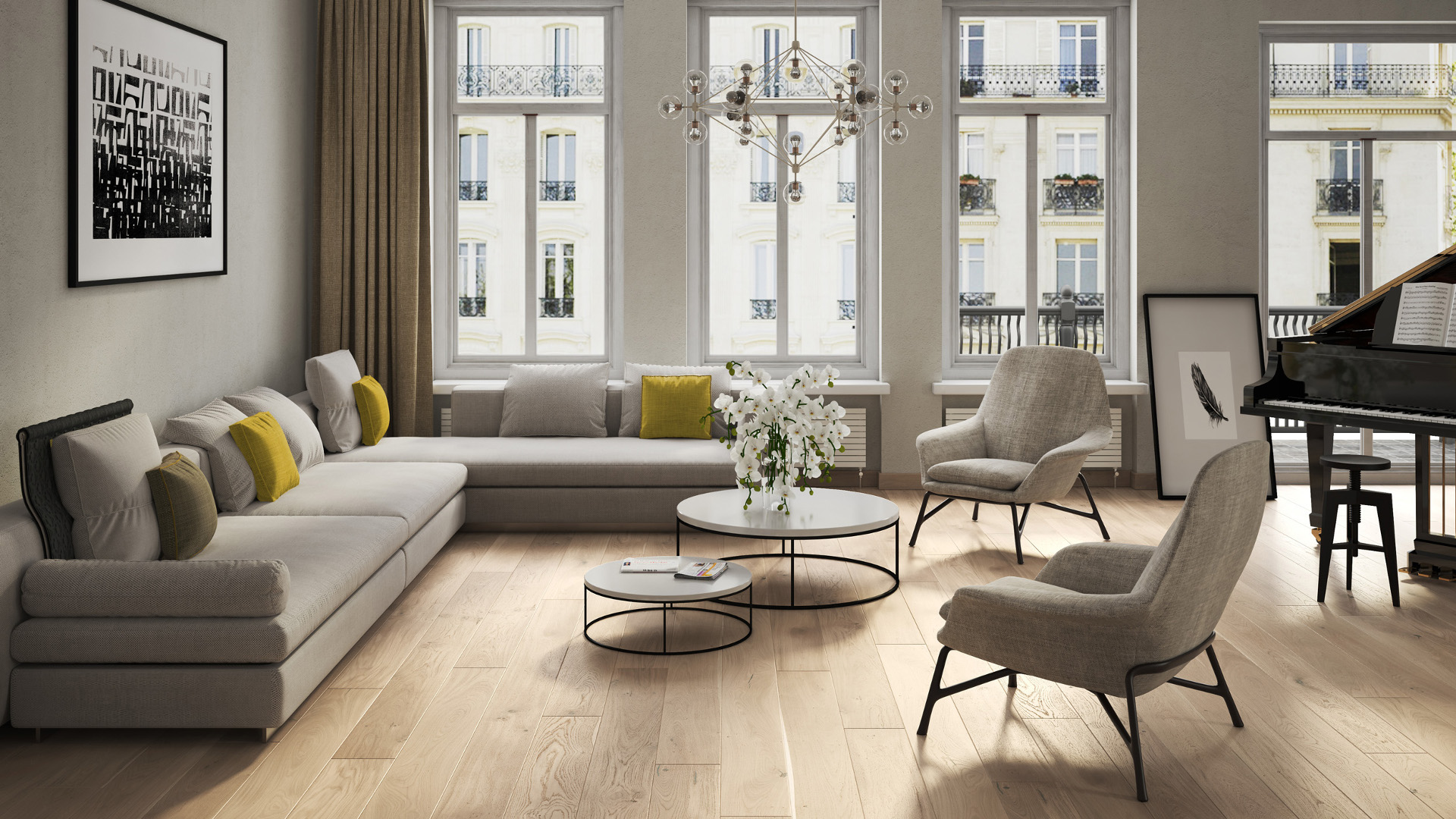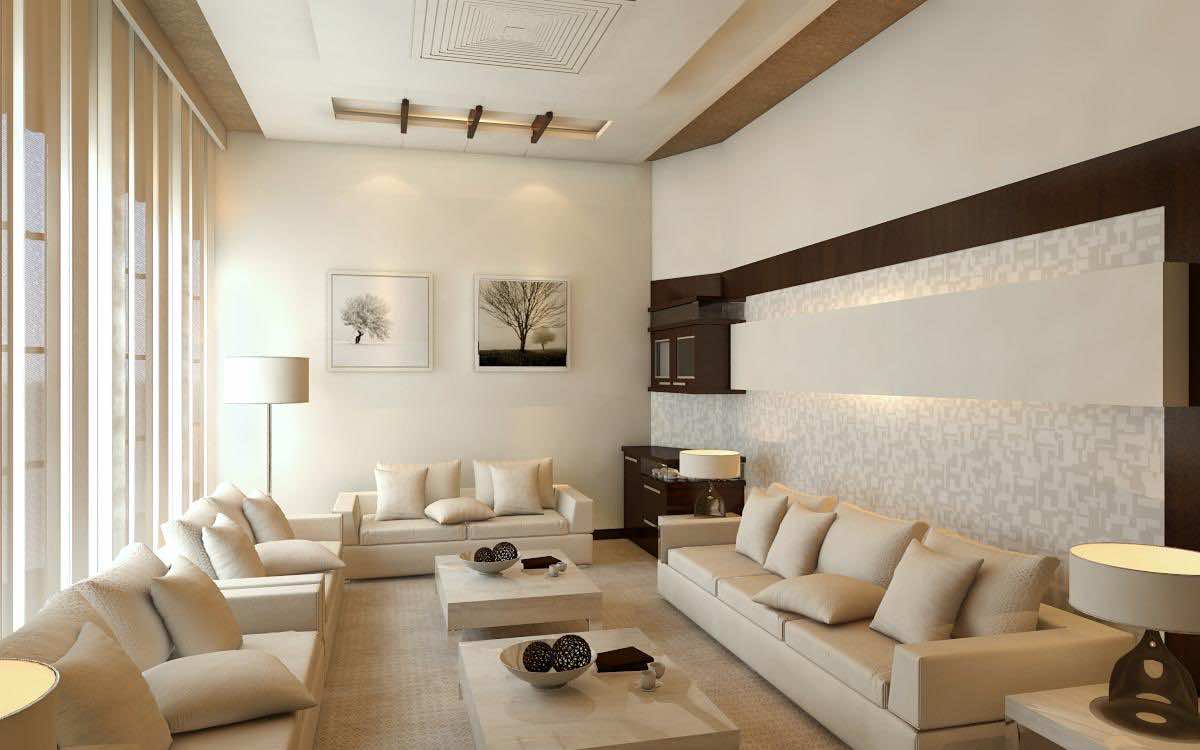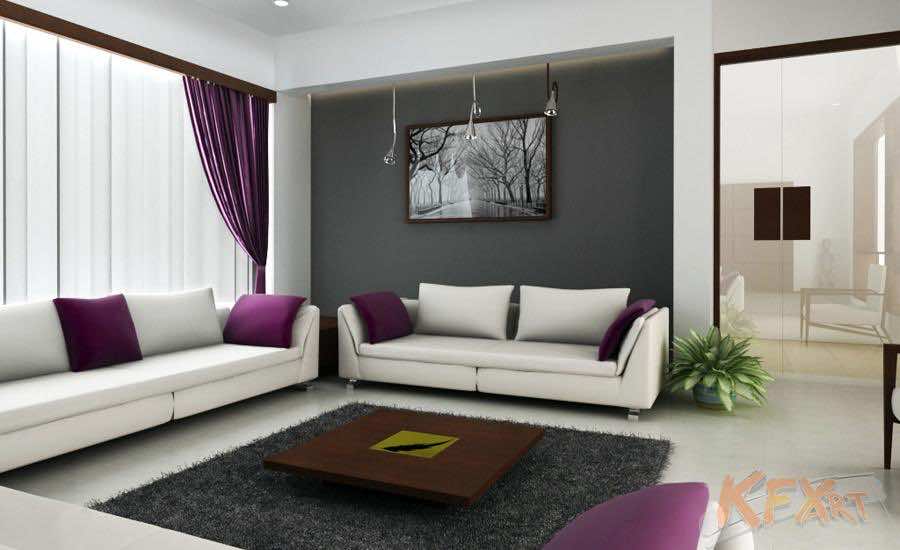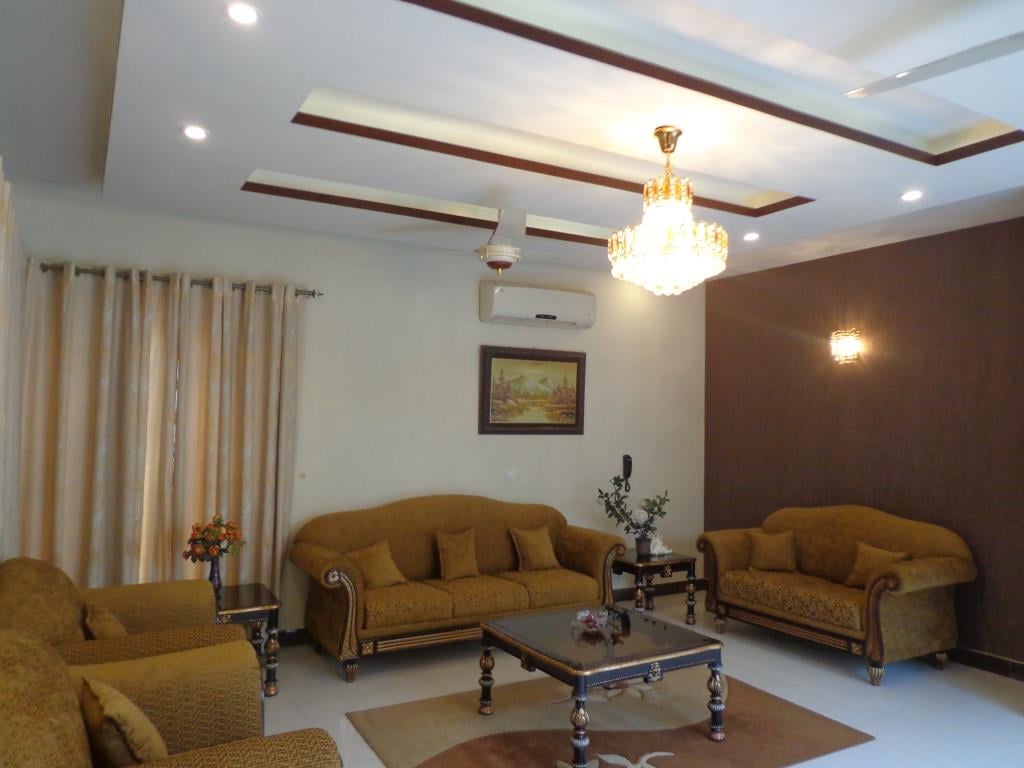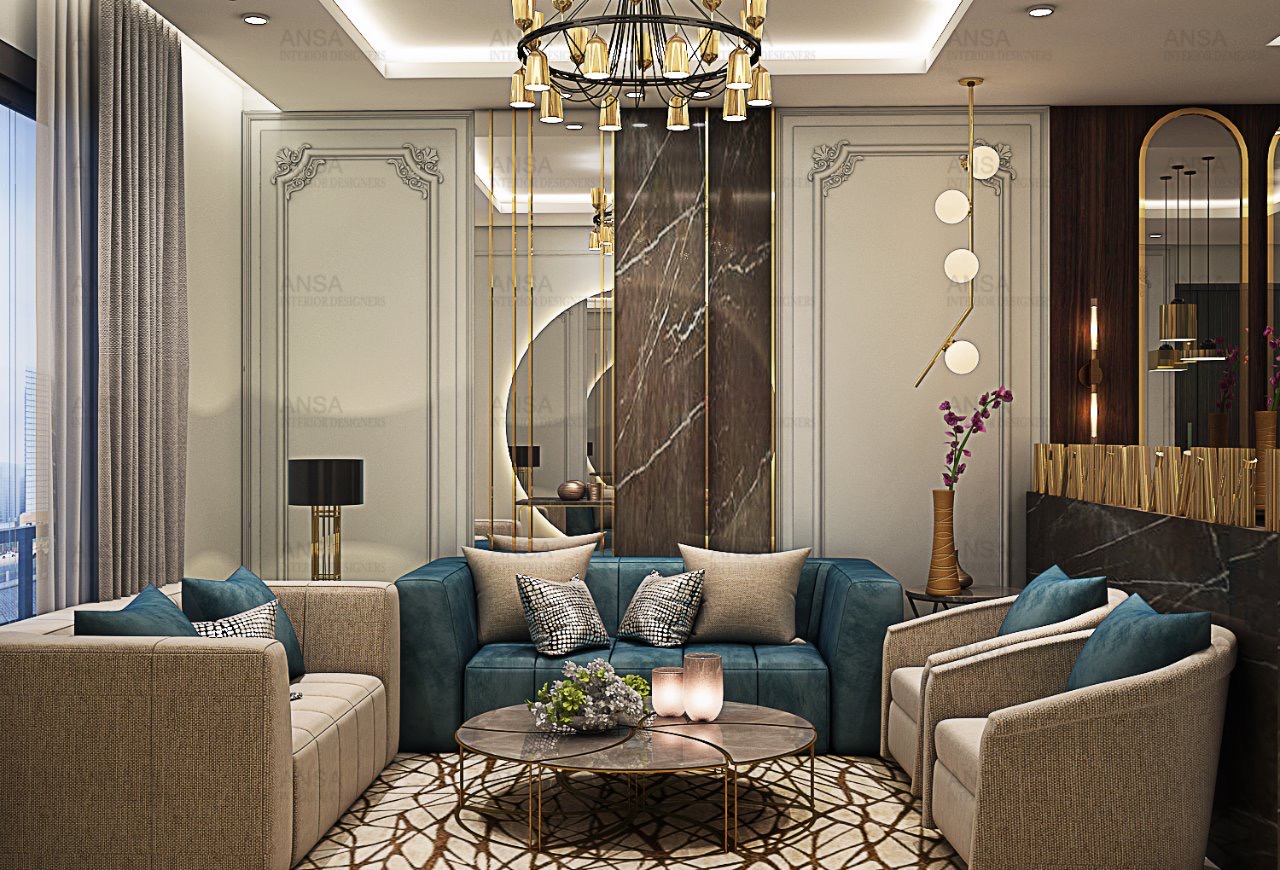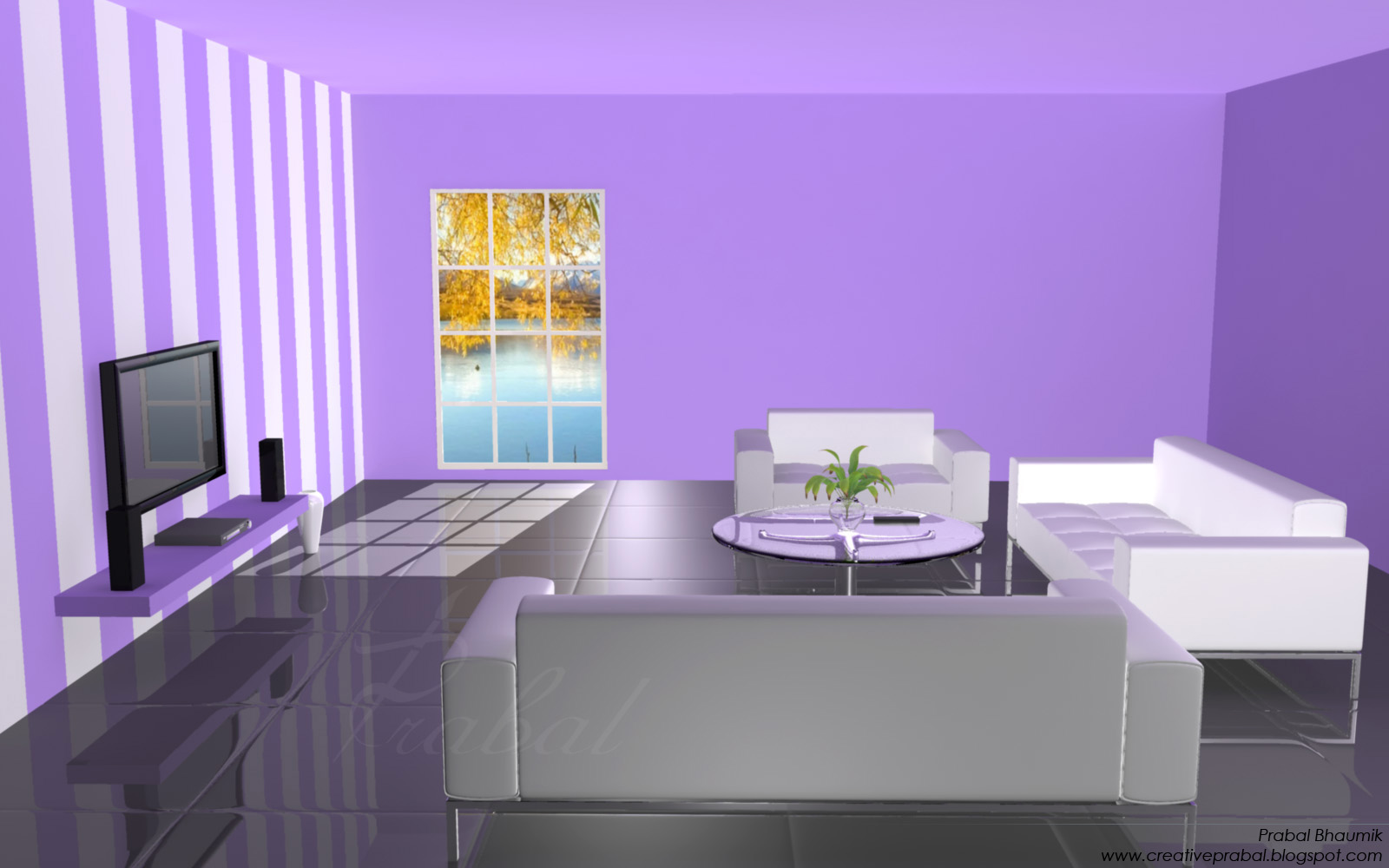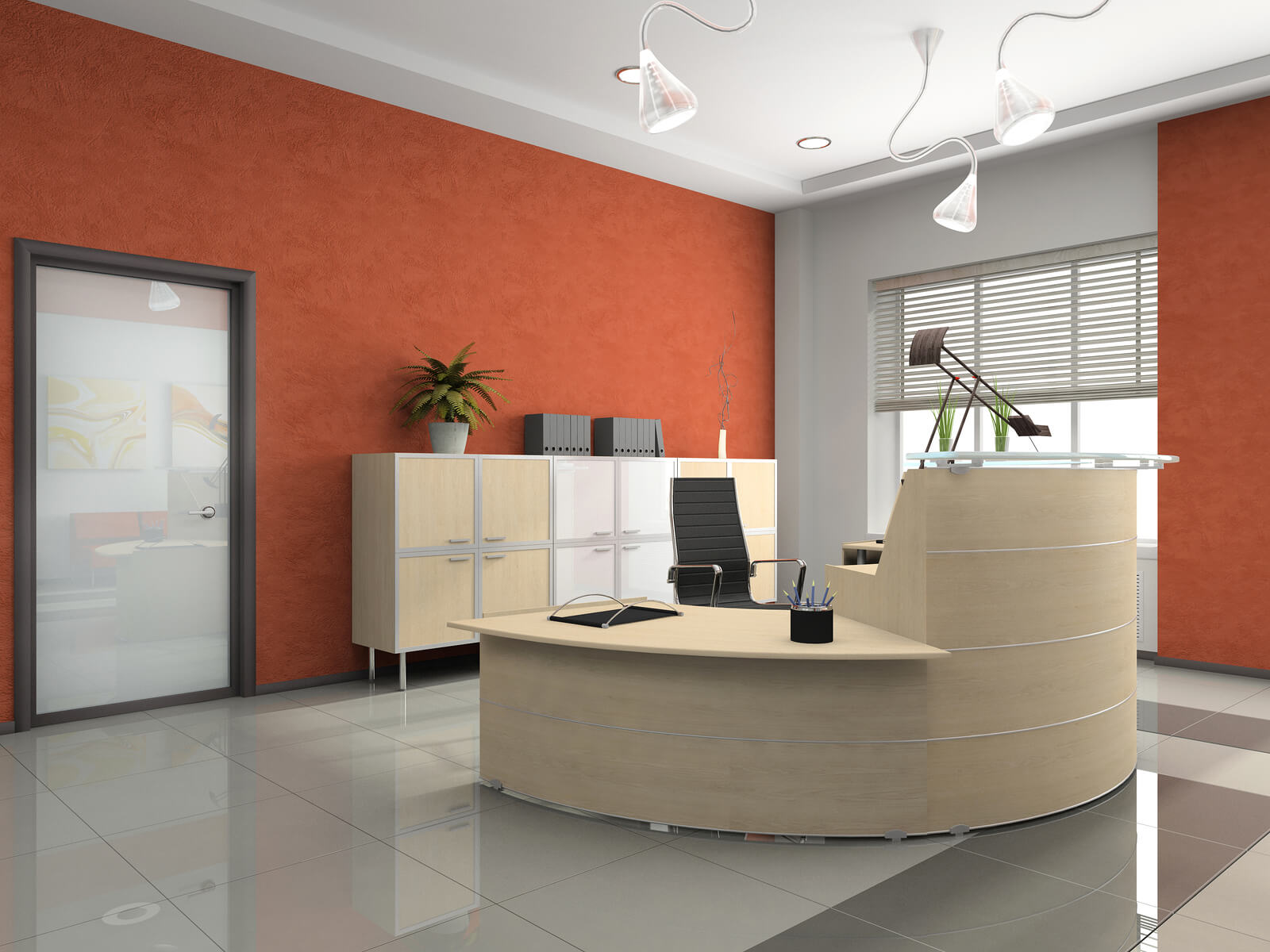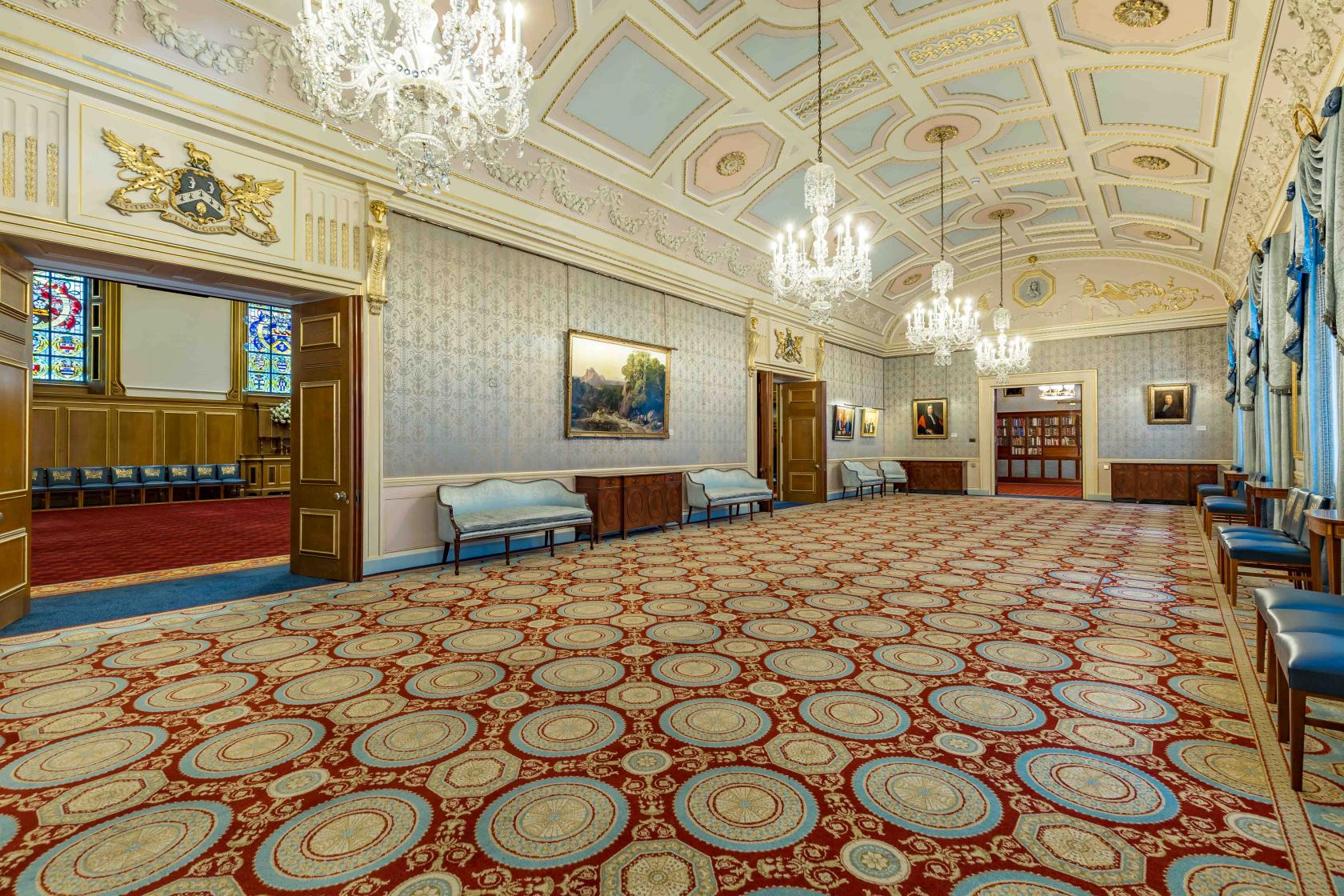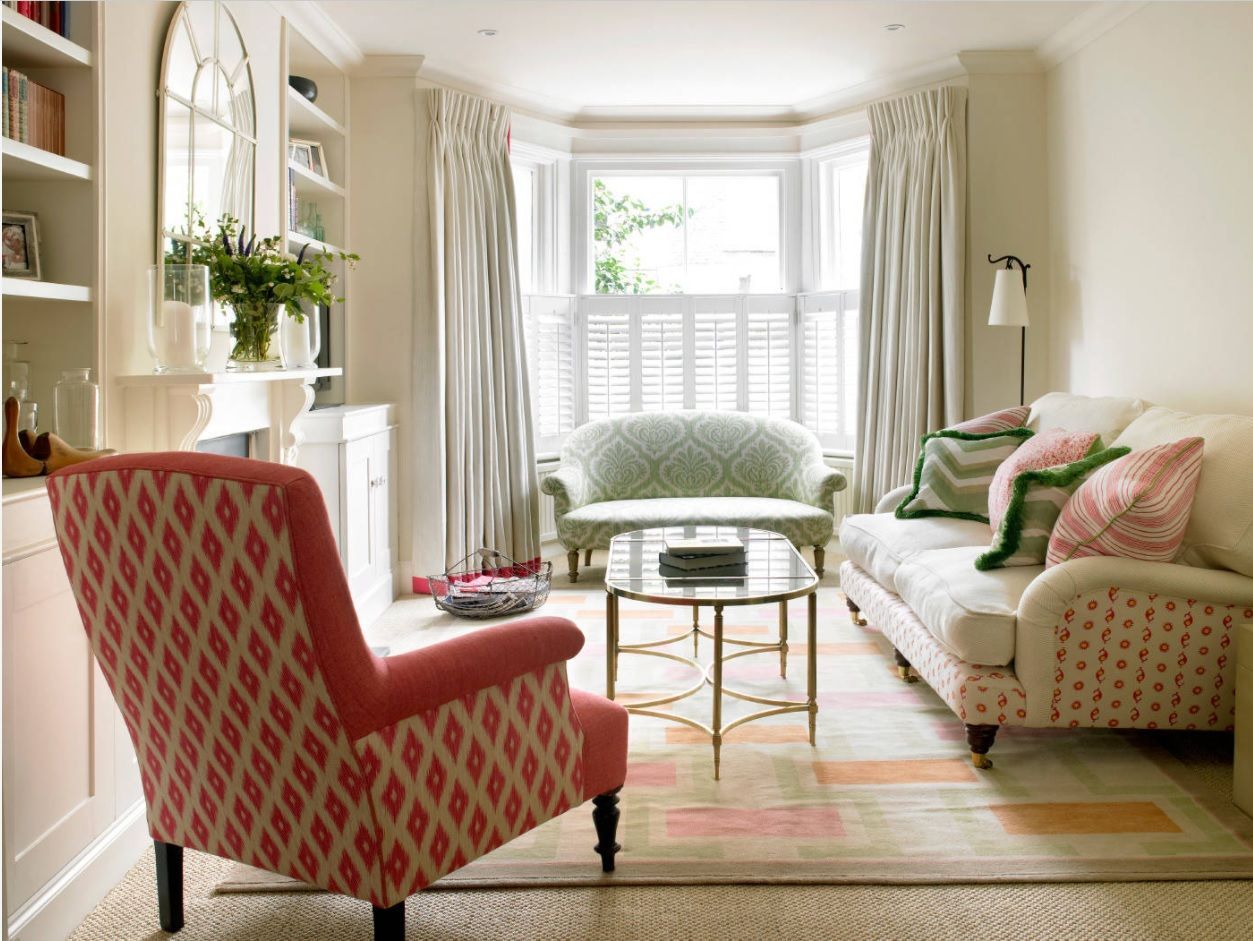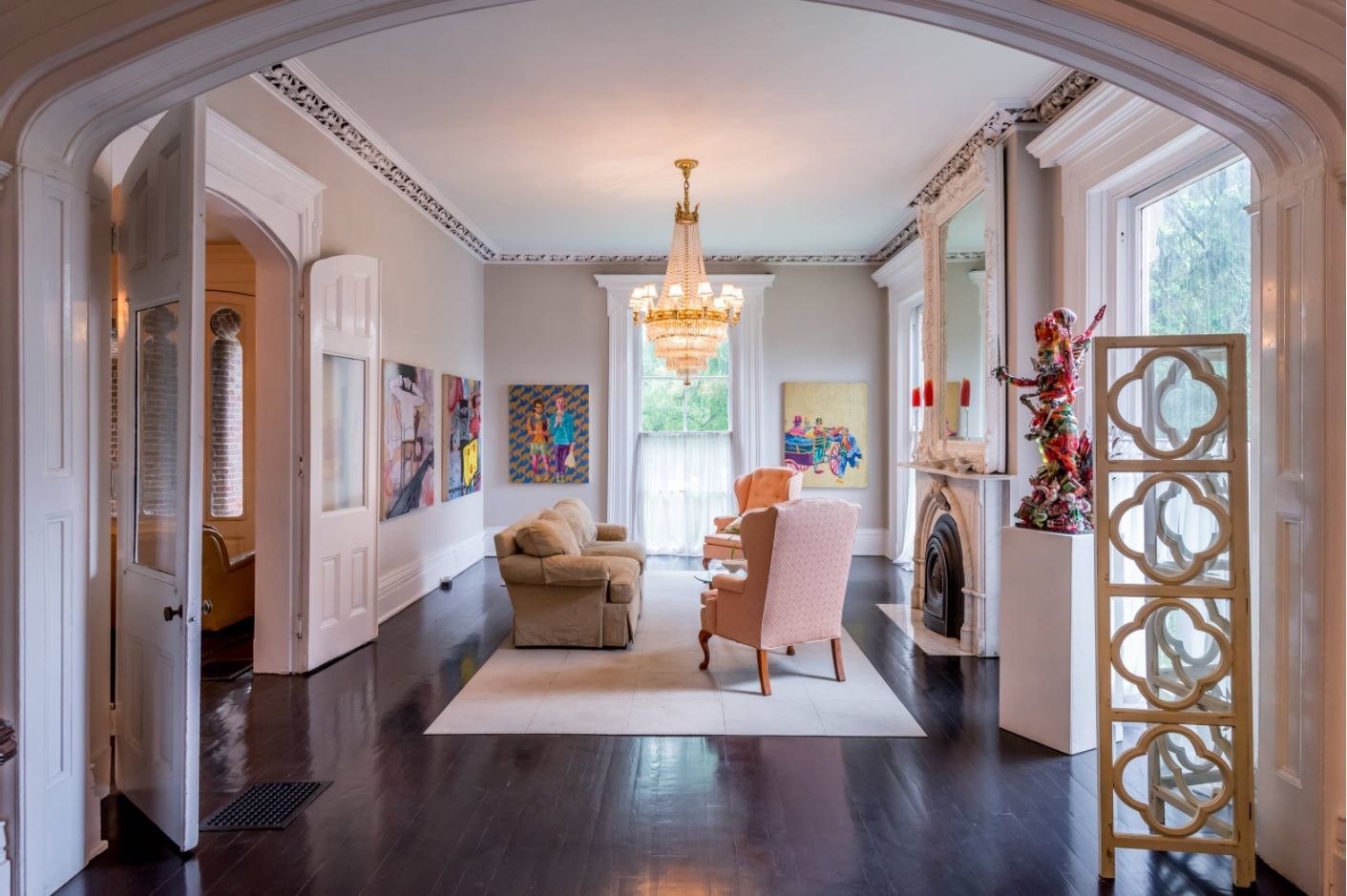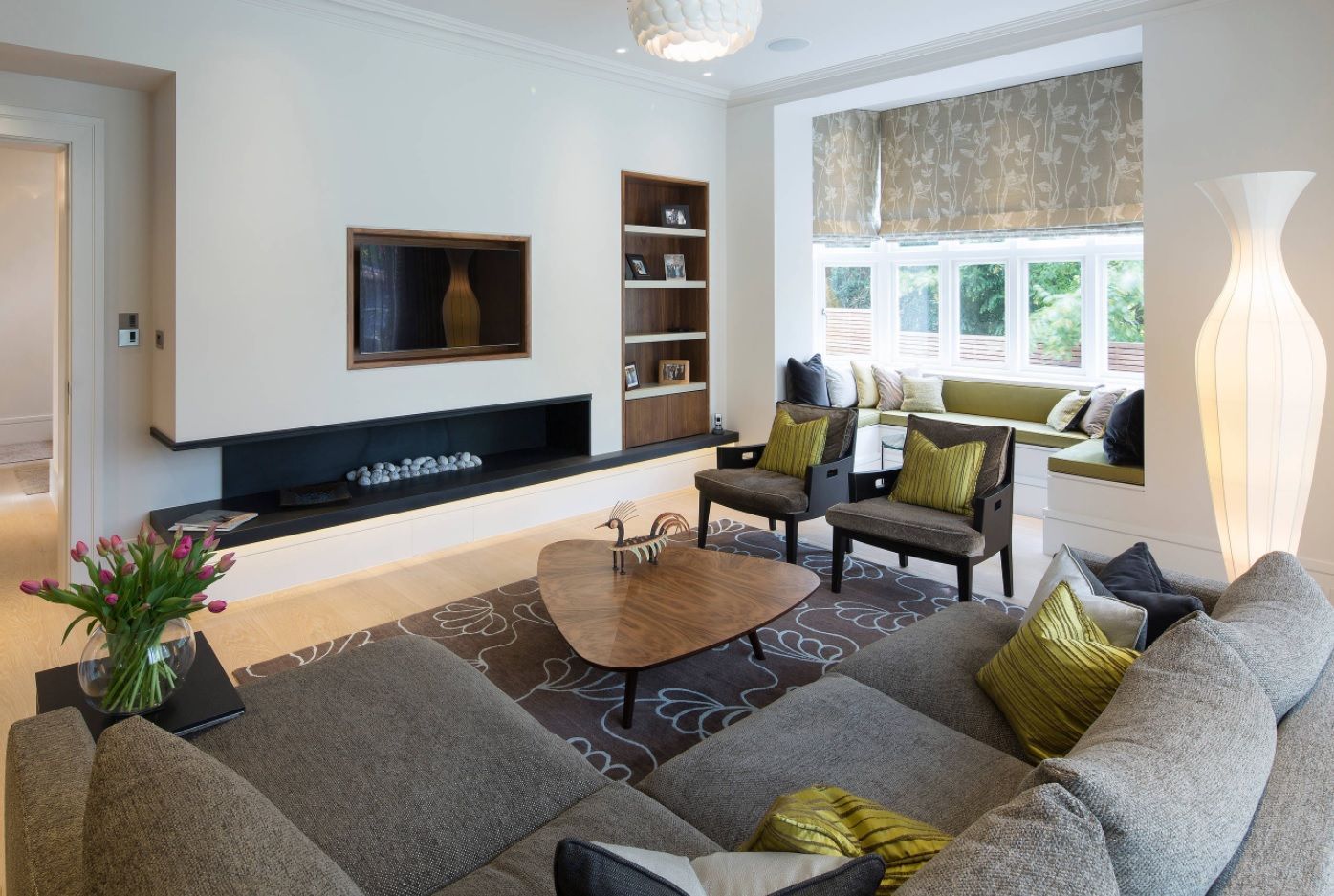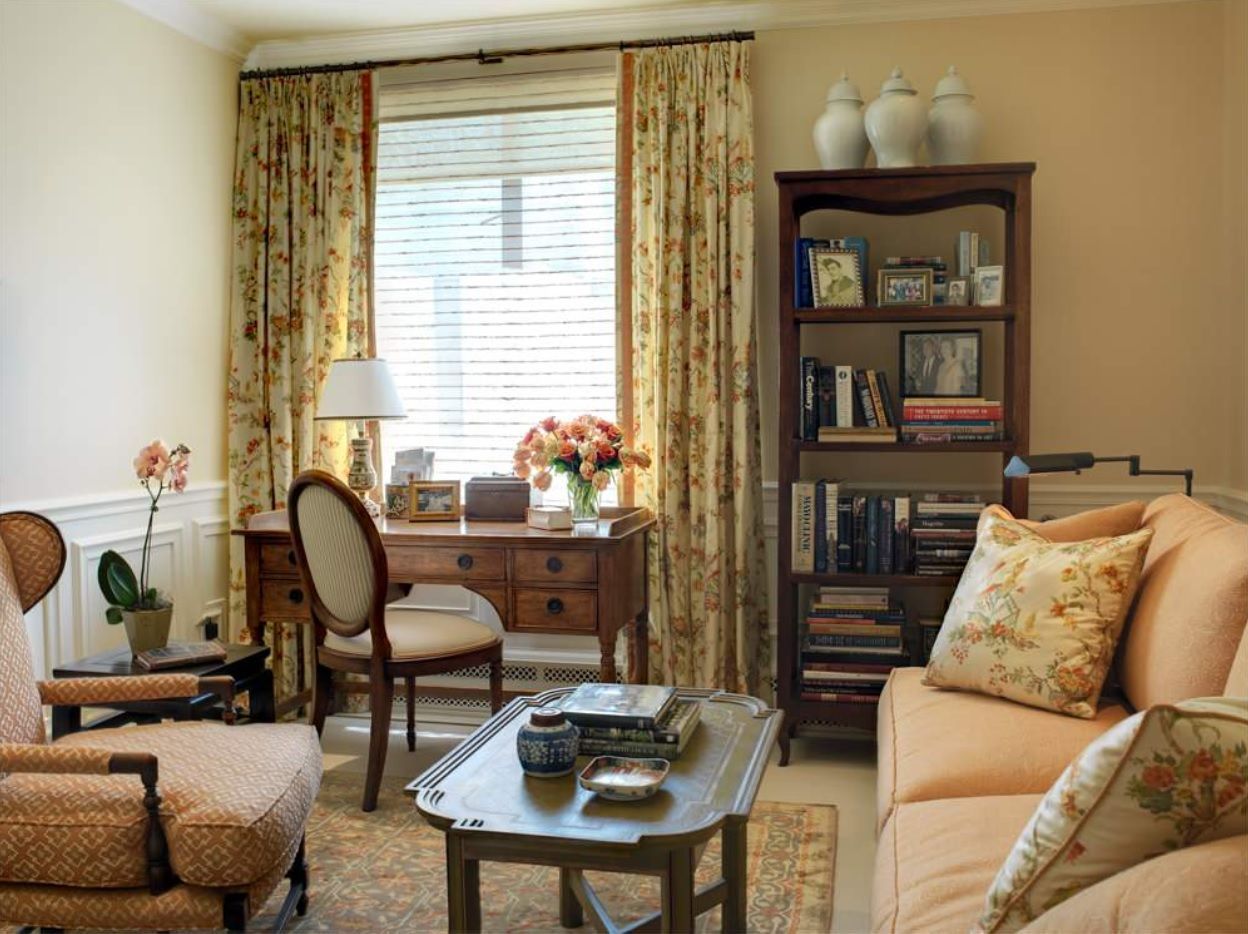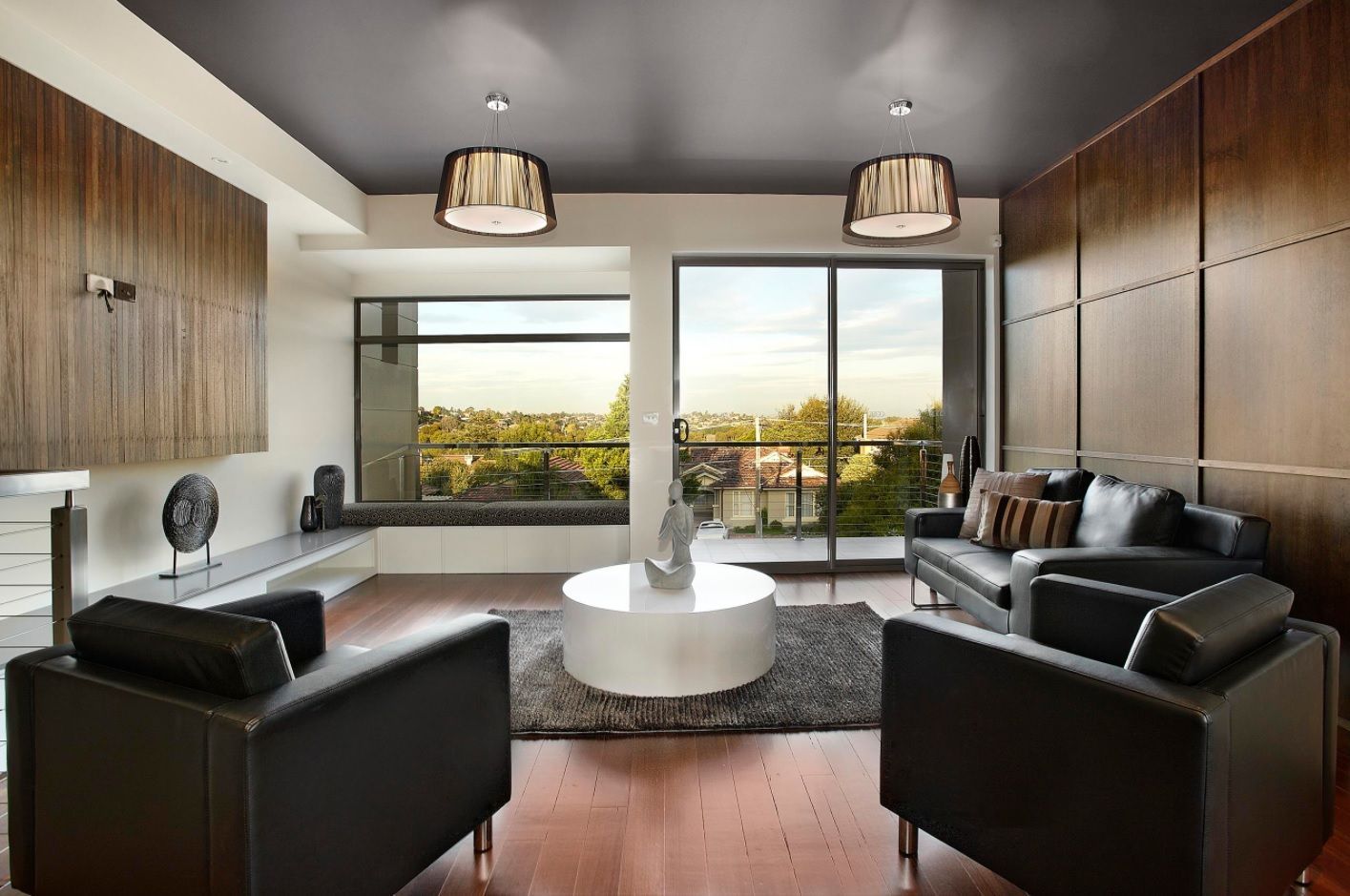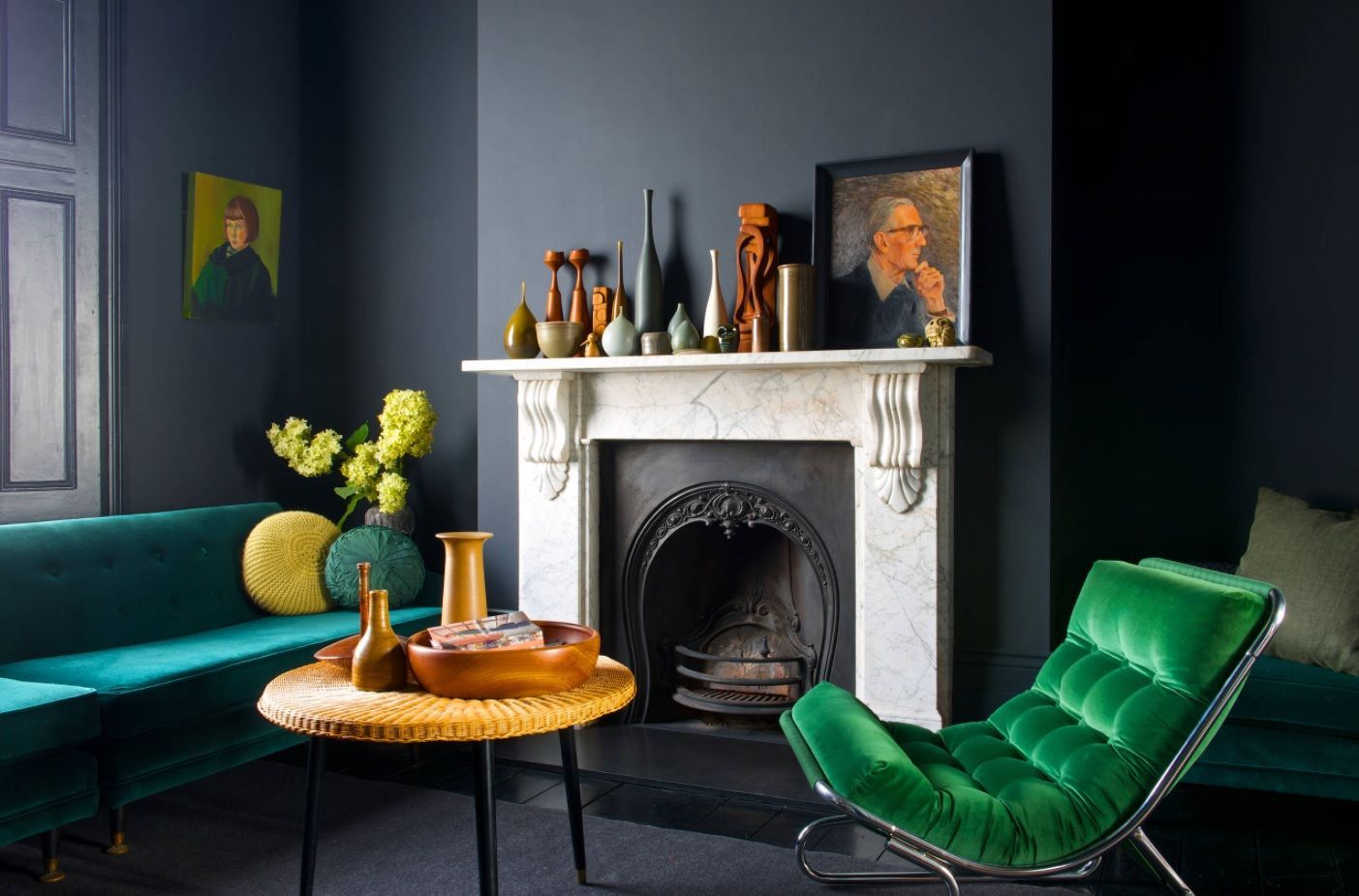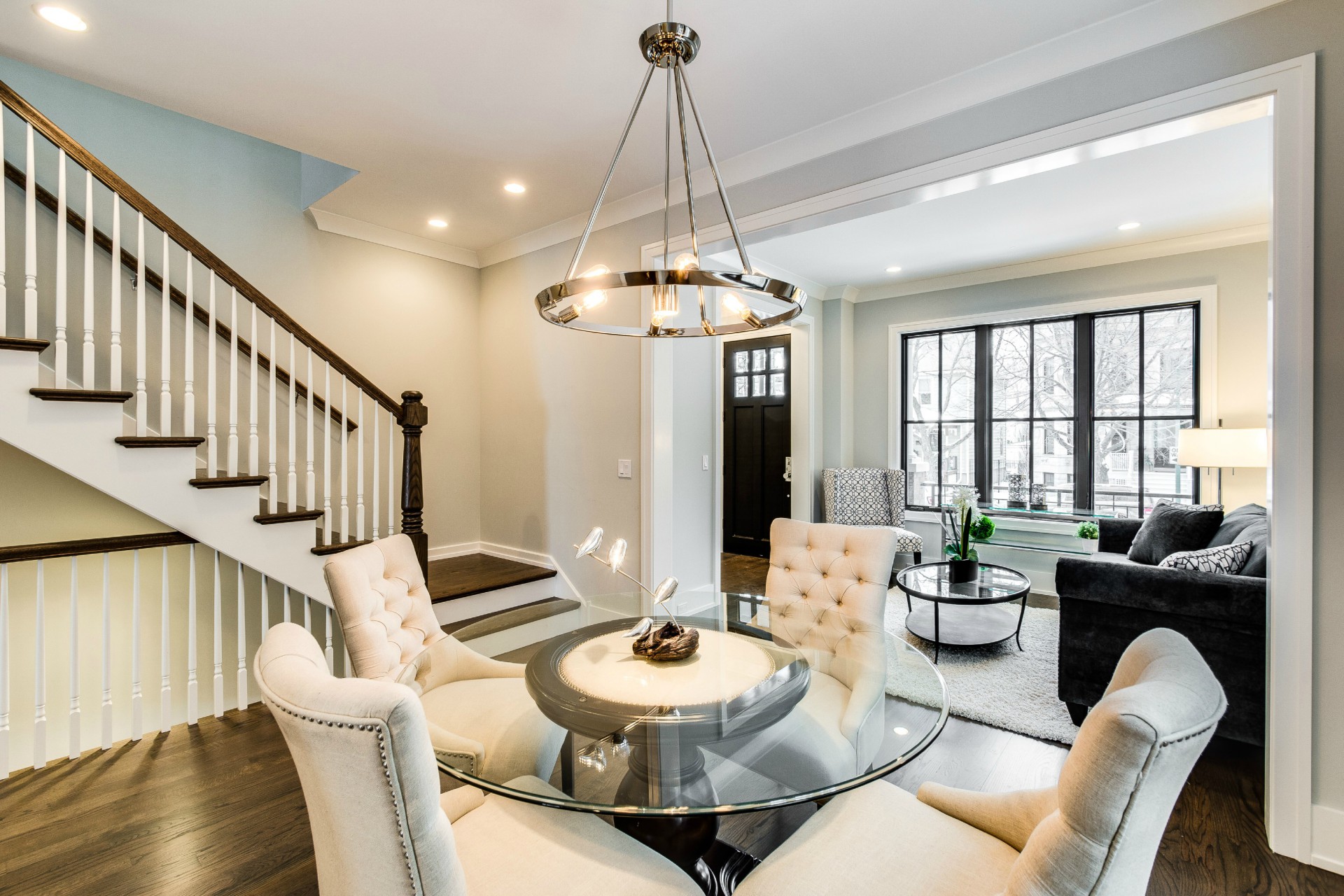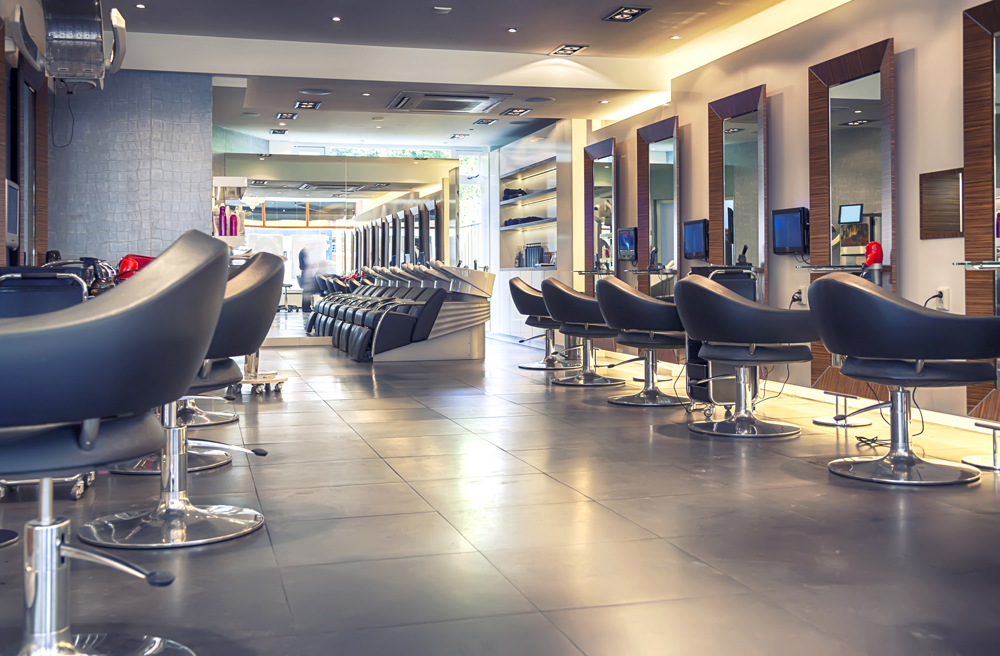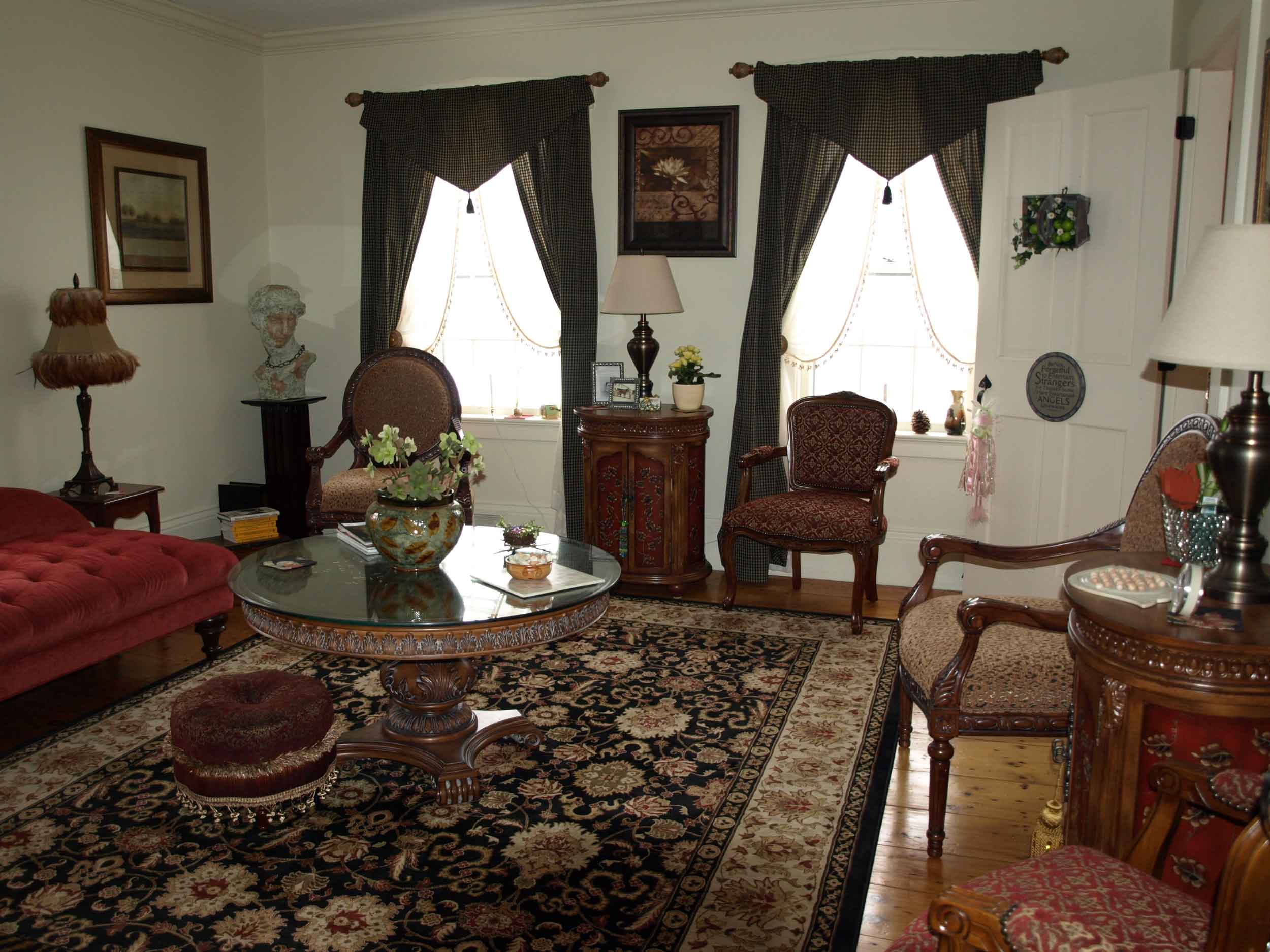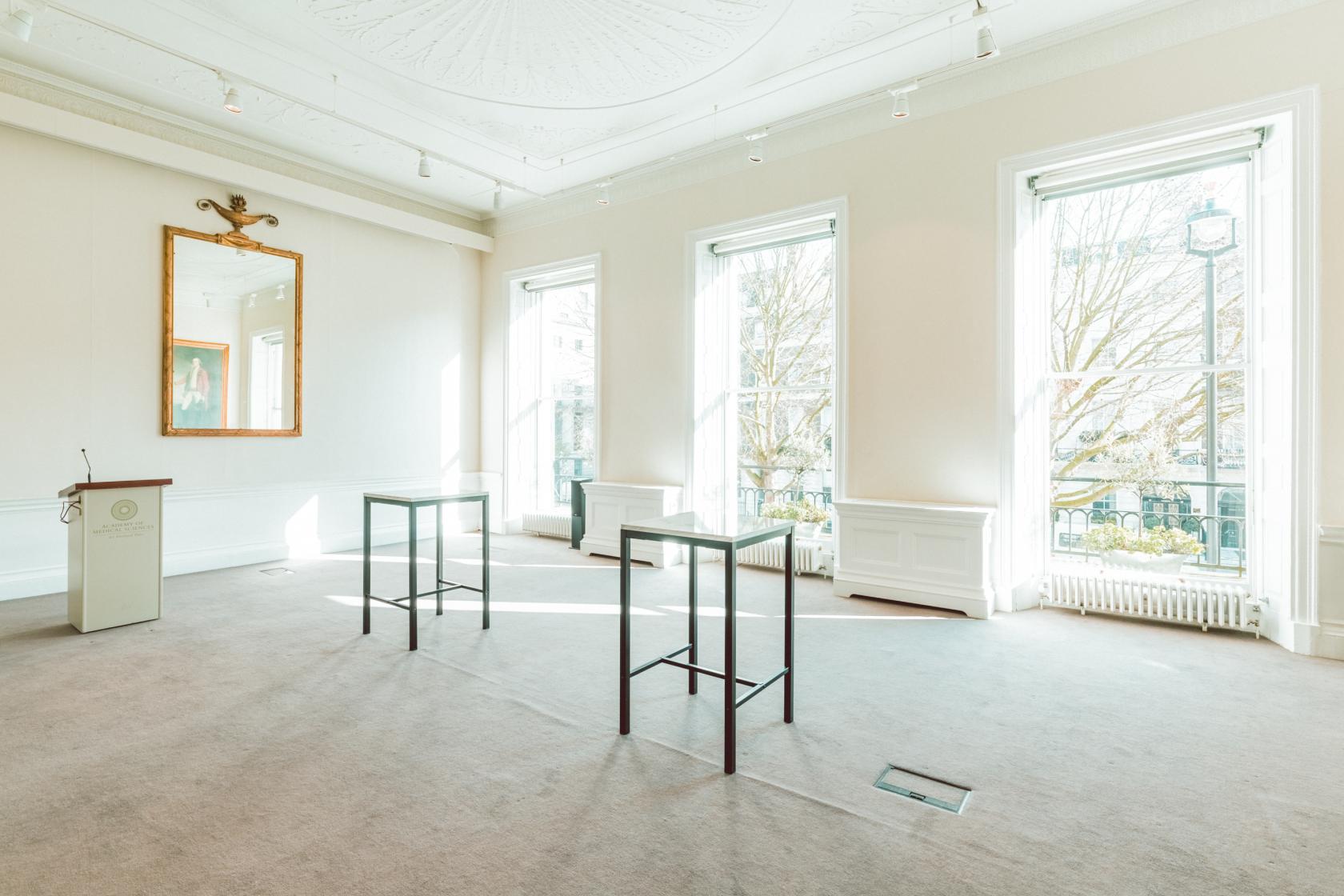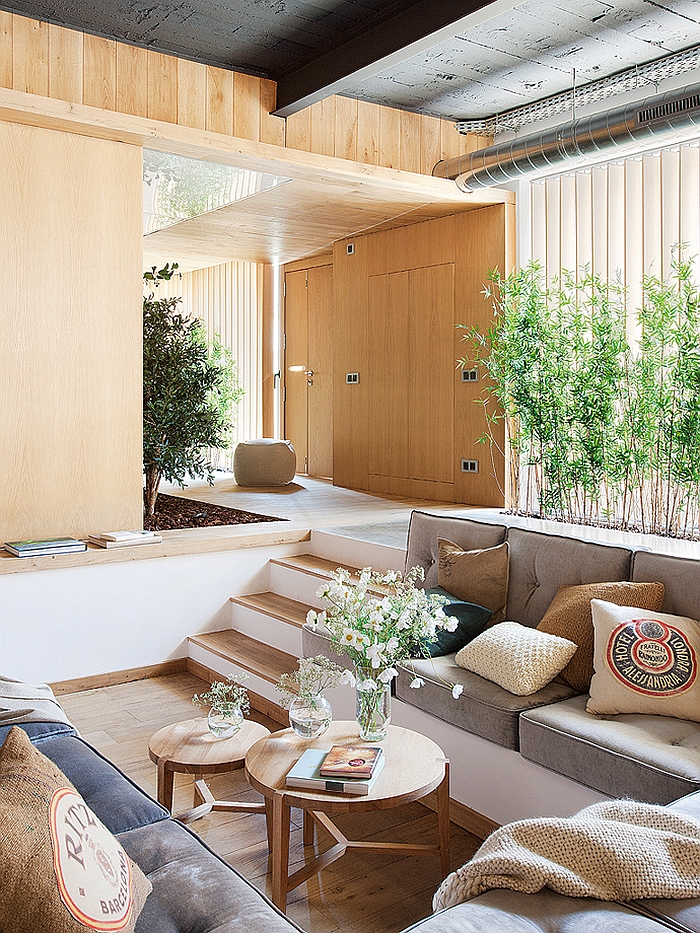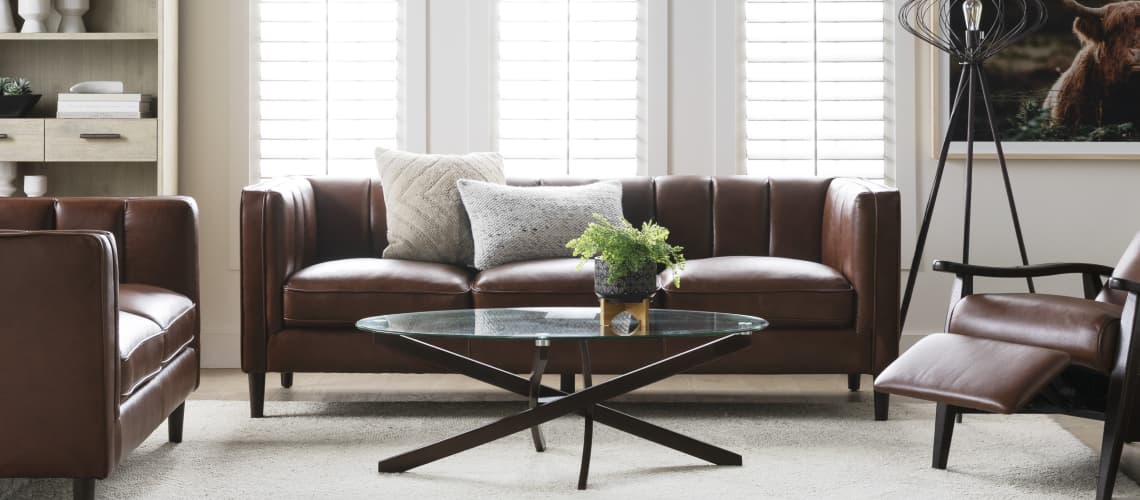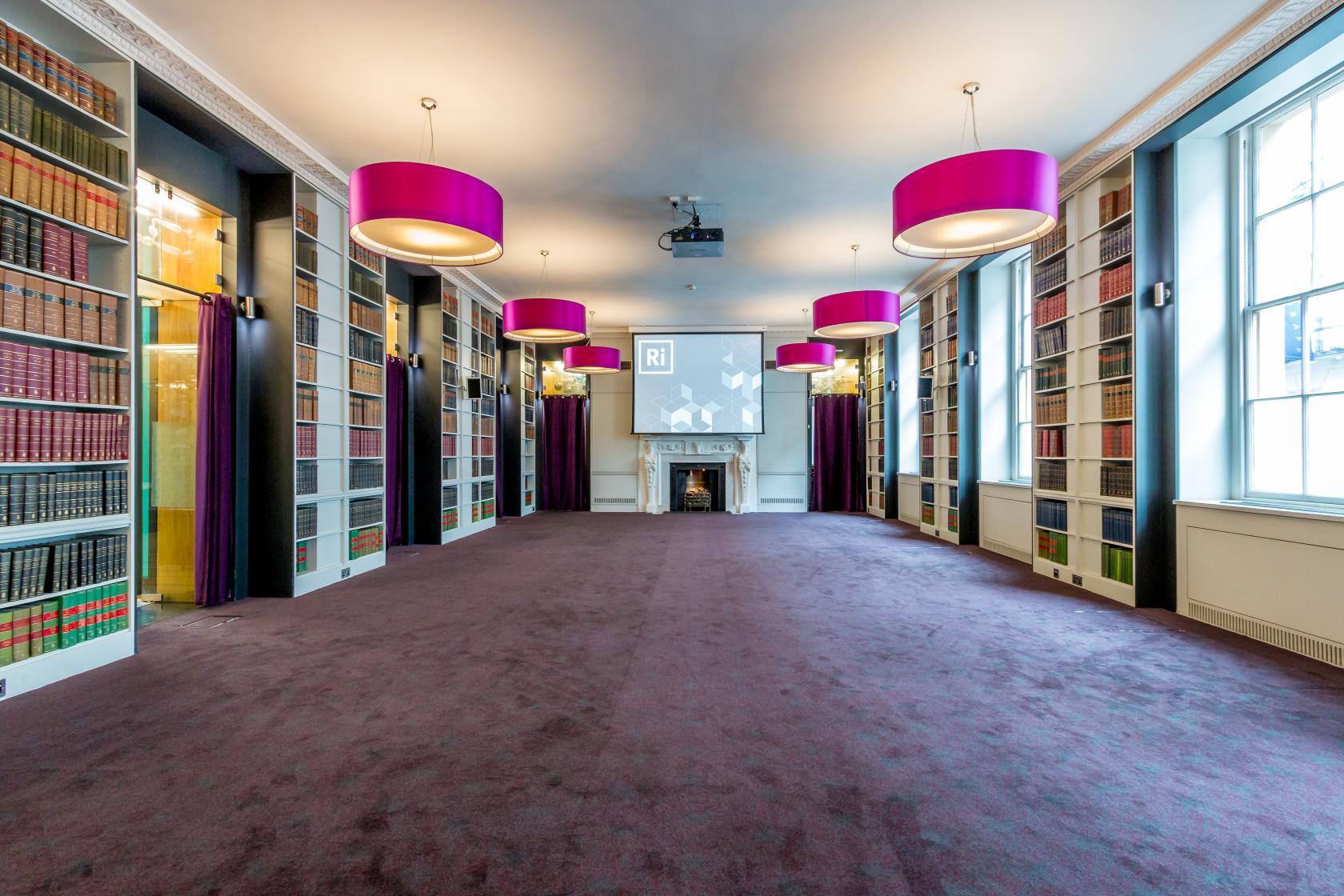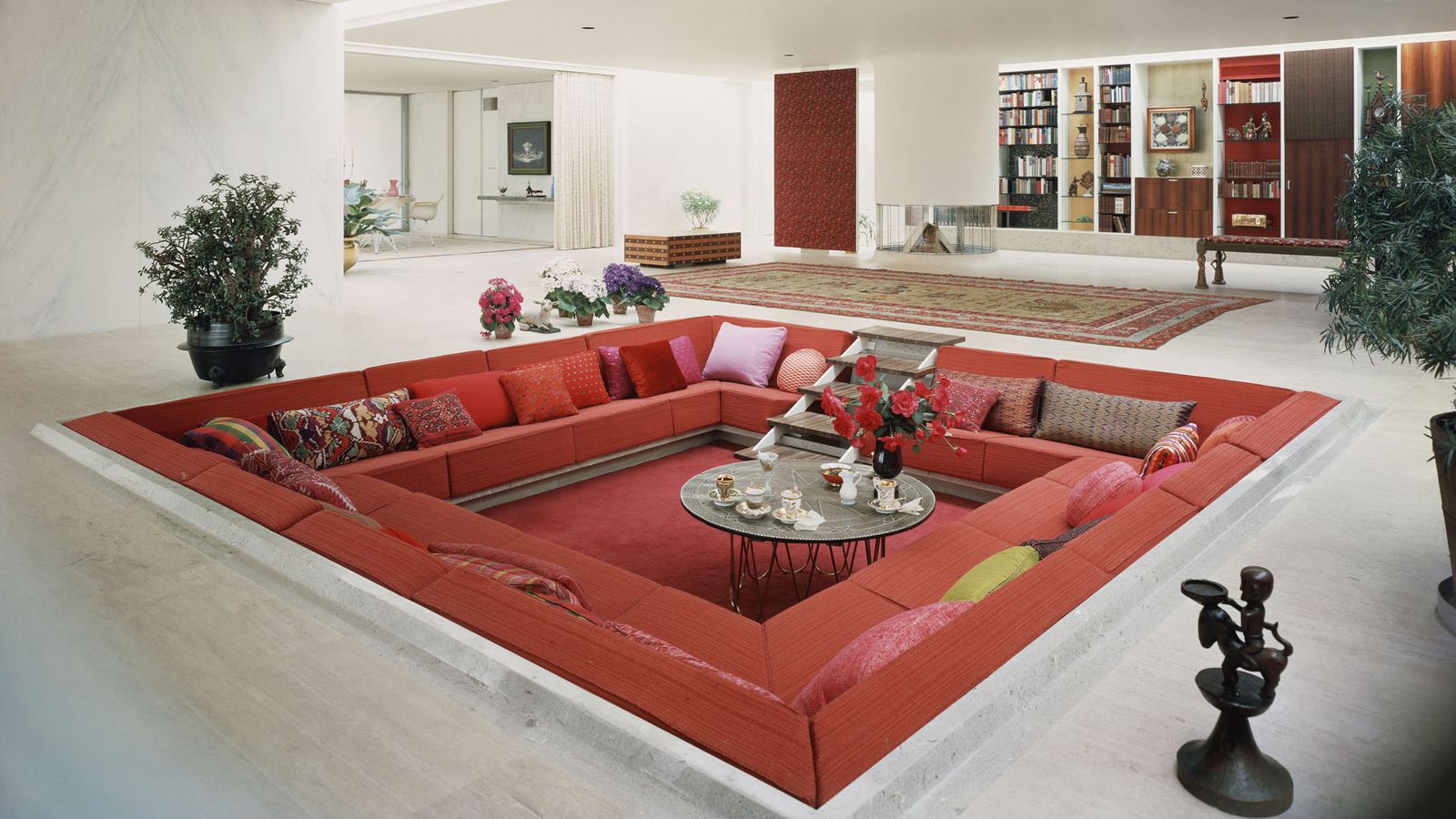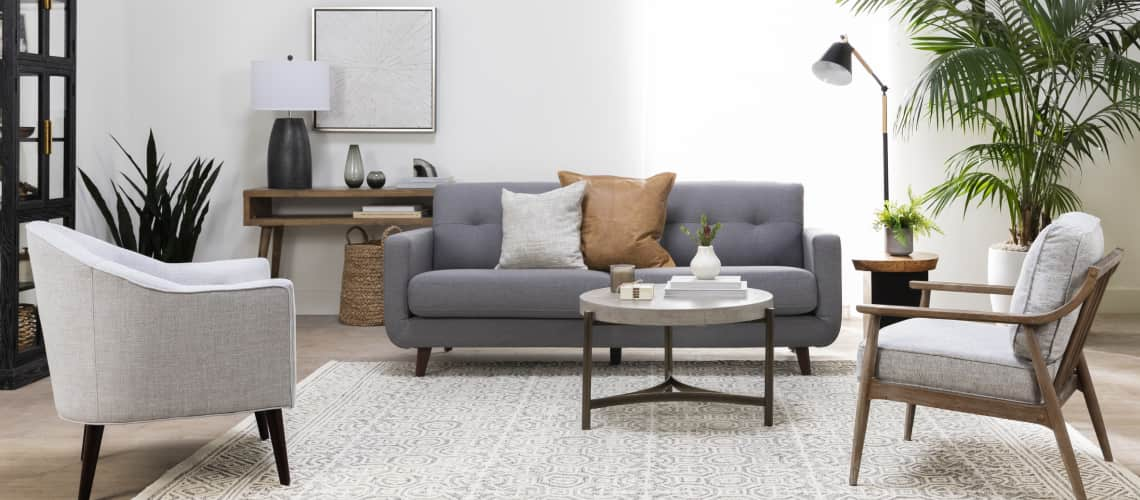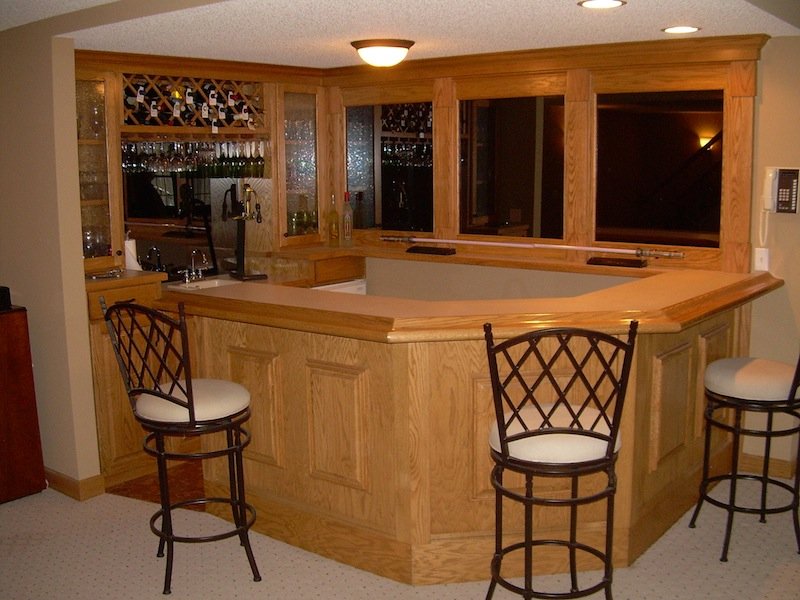The parlor was a popular term for the living room during the 18th century. It was a room designed for entertaining guests, with comfortable seating and elegant decor. This was a space where people could gather to socialize and engage in lively conversations. The parlor was typically located near the entrance of the house, making it the first room guests would see upon entering. The parlor was also a place for the family to relax and spend time together. It was often decorated with luxurious furnishings, such as plush sofas, ornate rugs, and beautiful artwork. The walls were adorned with intricate wallpaper and the windows were dressed in lavish drapery. The parlor was a symbol of wealth and status, as only the affluent could afford to have such a grand and well-decorated room in their home. Today, the term parlor is still used to describe a formal living room, but its popularity has faded over time. It remains a nostalgic nod to the elegant and refined living spaces of the 18th century.Parlor
The sitting room was another popular term for the living room during the 18th century. This was a room designated for relaxation and quiet activities, such as reading, sewing, or playing music. It was a more casual space compared to the parlor, with a cozy and comfortable atmosphere. The sitting room was often located in a quieter part of the house, away from the hustle and bustle of the main living areas. It was a place where family members could retreat to for some peace and quiet. The furniture in the sitting room was typically less formal than that of the parlor, with comfortable armchairs and soft cushions. The sitting room was a beloved space in the 18th century, and its purpose still holds true today. Many homes still have a designated sitting room, a place to unwind and relax after a long day.Sitting Room
The term salon was commonly used to describe a formal living room in the 18th century. It was a room designed for hosting social gatherings and events, such as musical performances, poetry readings, or political discussions. The salon was a place for intellectuals and artists to gather and exchange ideas. The salon was typically decorated with elegance and sophistication, with ornate furniture, lavish drapery, and beautiful artwork. The walls were often adorned with portraits of esteemed guests or paintings depicting scenes from literature or history. The salon was a symbol of culture and refinement, and only the most elite members of society were invited to attend these gatherings. While the term salon is not commonly used today, the concept of hosting formal gatherings in the living room still exists. Many homes have a designated space for entertaining guests, where conversations and ideas can flow freely.Salon
The drawing room was a popular term for the living room during the 18th century, particularly in England. It was a room designated for formal gatherings and events, similar to the salon. However, the drawing room was typically more intimate and reserved for smaller groups. The drawing room was often used for after-dinner conversations or for hosting tea parties. It was a space for close friends and family to gather and socialize. The decor in the drawing room was often more refined and elegant than other living spaces, with luxurious furnishings and intricate details. Today, the term drawing room is not as commonly used, but its purpose still remains. Many homes have a designated space for hosting intimate gatherings or for quiet conversations with loved ones.Drawing Room
The reception room was another term for the living room in the 18th century, particularly in France. It was a space designated for welcoming and entertaining guests. The reception room was often grand and elaborate, with opulent furnishings and decor. This was a room where guests would be received before being invited into other areas of the house. It was a place for making a good impression and showcasing one's wealth and status. The reception room was also used for formal events and gatherings, such as balls or dinners. The term reception room is not commonly used today, but its purpose of welcoming and entertaining guests is still relevant. Many homes have a designated space for receiving and hosting visitors.Reception Room
The front room was a term used to describe the main living space in a house during the 18th century. This was often the largest room in the house, located at the front of the house facing the street. The front room was a multi-functional space, used for various activities such as dining, entertaining, and relaxing. The front room was typically decorated with a mix of formal and casual furnishings, making it a versatile space. It was also a place to display family heirlooms and treasured belongings. The front room was the heart of the home, where the family would gather to spend time together. Today, the term front room is still used to describe the main living space in a house, although it is more commonly referred to as the living room or family room.Front Room
The word parlour is derived from the French word "parler," which means "to speak." In the 18th century, the parlour was a room designated for conversation and socializing. It was a place for guests to gather and engage in meaningful discussions. The parlour was often decorated with comfortable seating and a warm, inviting atmosphere. It was a space for fostering relationships and exchanging ideas. The term parlour is not commonly used today, but its purpose of providing a space for conversation and connection remains.Parlour
The reception chamber was a term used to describe the living room in the 18th century, particularly in grand estates or castles. This was a room reserved for receiving and entertaining guests of high social status. The reception chamber was often the most lavishly decorated room in the house, with ornate furnishings, intricate details, and luxurious materials. It was a space for impressing and showing off one's wealth and power. The reception chamber was also used for formal events and gatherings, such as balls or banquets. The term reception chamber is not commonly used today, but its purpose of hosting prestigious guests and events is still relevant. Many historic homes and buildings still have a designated reception chamber for this purpose.Reception Chamber
The withdrawing room was a term used to describe a smaller living space in the 18th century. It was a room where women could retreat to after dinner, away from the men. The withdrawing room was often decorated with feminine touches and used for activities such as sewing or reading. This was a space for women to relax and socialize with each other. It was also a place for mothers to spend time with their daughters or for older women to mentor and guide younger ones. The withdrawing room was a symbol of female empowerment and provided a sense of independence and autonomy. While the term withdrawing room is not commonly used today, the concept of having a designated space for women to gather and support each other still exists.Withdrawing Room
The conversation room was a term used to describe a living space in the 18th century that was designated for meaningful discussions and debates. This was a space for intellectuals and thinkers to gather and engage in stimulating conversations. The conversation room was often decorated with comfortable seating and a cozy atmosphere, to encourage open and honest communication. It was a place for exchanging ideas and challenging societal norms. The conversation room was a symbol of free thought and expression. Today, the term conversation room is not commonly used, but its purpose of providing a space for meaningful discussions and intellectual discourse is still relevant. Many homes have a designated room for this purpose, often called a study or den.Conversation Room
The Evolution of the Living Room: A Look into 18th Century House Design

The Importance of the Living Room in 18th Century Homes
 In the 18th century, the concept of a designated living room or "parlor" became popular among the upper class in Europe and America. This space was seen as a formal area for socializing and entertaining guests, separate from the more private bedrooms and kitchen areas. The term "living room" was not commonly used until the late 19th century, but the idea of a designated space for relaxation and socializing had already taken root in house design.
18th century living rooms were not just a place for social gatherings, but also served as a reflection of one's social status and taste
. Wealthy homeowners would often display their fine art and luxurious furniture in their living rooms, showcasing their wealth and sophistication. The layout of the room was carefully planned to create a sense of grandeur, with large windows allowing natural light to flood in and ornate chandeliers hanging from the ceiling.
In the 18th century, the concept of a designated living room or "parlor" became popular among the upper class in Europe and America. This space was seen as a formal area for socializing and entertaining guests, separate from the more private bedrooms and kitchen areas. The term "living room" was not commonly used until the late 19th century, but the idea of a designated space for relaxation and socializing had already taken root in house design.
18th century living rooms were not just a place for social gatherings, but also served as a reflection of one's social status and taste
. Wealthy homeowners would often display their fine art and luxurious furniture in their living rooms, showcasing their wealth and sophistication. The layout of the room was carefully planned to create a sense of grandeur, with large windows allowing natural light to flood in and ornate chandeliers hanging from the ceiling.
The Evolution of House Design and its Impact on the Living Room
 As society and technology advanced, so did house design and the concept of the living room. In the 19th century, the Industrial Revolution brought about changes in architecture, making it possible for middle-class families to have larger homes with designated living spaces. The rise of the middle class also meant that living rooms were no longer reserved for the elite, but became a common feature in homes of all social classes.
With the rise of the Arts and Crafts movement in the late 19th century, the focus shifted from opulence to simplicity and functionality in house design.
This had a direct impact on the living room, with a move towards more comfortable and casual furniture, such as sofas and armchairs, replacing the stiff and formal seating arrangements of the previous century. The living room also became a space for families to gather, with the introduction of board games, books, and other forms of entertainment.
As society and technology advanced, so did house design and the concept of the living room. In the 19th century, the Industrial Revolution brought about changes in architecture, making it possible for middle-class families to have larger homes with designated living spaces. The rise of the middle class also meant that living rooms were no longer reserved for the elite, but became a common feature in homes of all social classes.
With the rise of the Arts and Crafts movement in the late 19th century, the focus shifted from opulence to simplicity and functionality in house design.
This had a direct impact on the living room, with a move towards more comfortable and casual furniture, such as sofas and armchairs, replacing the stiff and formal seating arrangements of the previous century. The living room also became a space for families to gather, with the introduction of board games, books, and other forms of entertainment.
Bringing the 18th Century Living Room into Modern Times
 Today, while the living room remains a common feature in homes, its purpose and design have evolved. It is no longer just a formal space for entertaining guests, but a multifunctional area for relaxation, work, and family time. The 18th century parlor may have been grand and ornate, but modern living rooms prioritize comfort, functionality, and personal style.
However, elements of 18th century house design can still be incorporated into modern living rooms.
Ornate details, such as crown molding and decorative woodwork, can add a touch of elegance and history to a room. And while technology has advanced, the idea of a designated space for socializing and relaxation remains a key aspect in house design.
In conclusion, the concept of the living room has come a long way since its 18th century origins. From a formal space reserved for the elite to a versatile and comfortable area for all, the living room continues to be a central part of house design, constantly evolving with the times.
Today, while the living room remains a common feature in homes, its purpose and design have evolved. It is no longer just a formal space for entertaining guests, but a multifunctional area for relaxation, work, and family time. The 18th century parlor may have been grand and ornate, but modern living rooms prioritize comfort, functionality, and personal style.
However, elements of 18th century house design can still be incorporated into modern living rooms.
Ornate details, such as crown molding and decorative woodwork, can add a touch of elegance and history to a room. And while technology has advanced, the idea of a designated space for socializing and relaxation remains a key aspect in house design.
In conclusion, the concept of the living room has come a long way since its 18th century origins. From a formal space reserved for the elite to a versatile and comfortable area for all, the living room continues to be a central part of house design, constantly evolving with the times.

